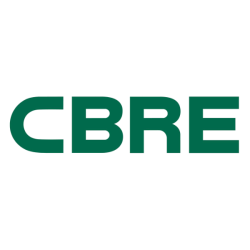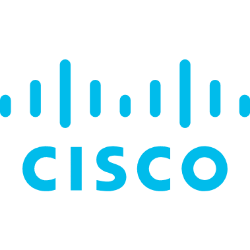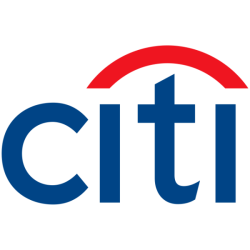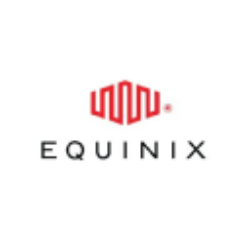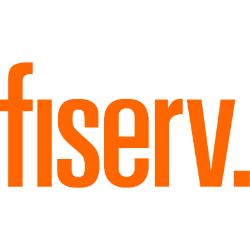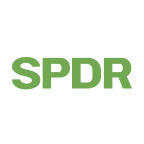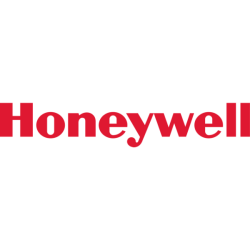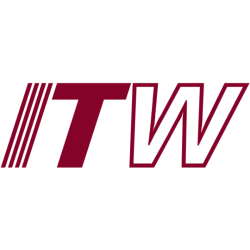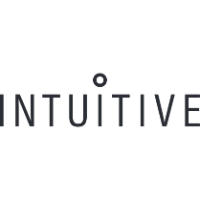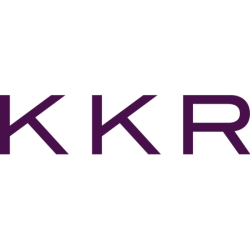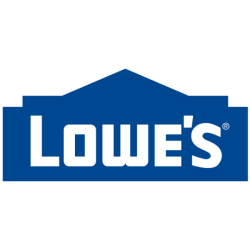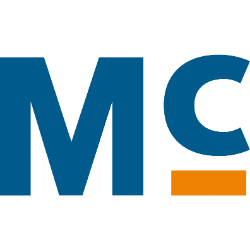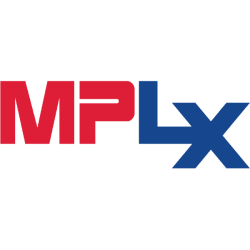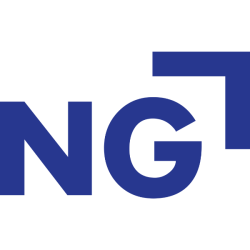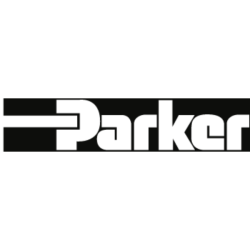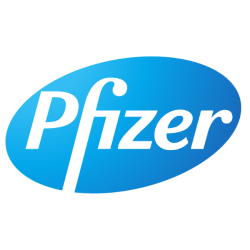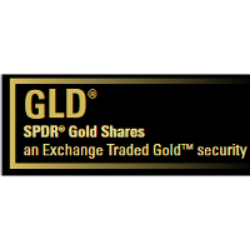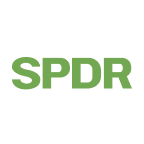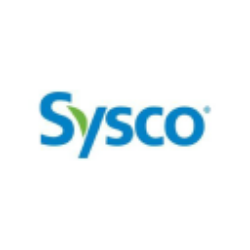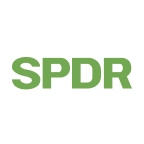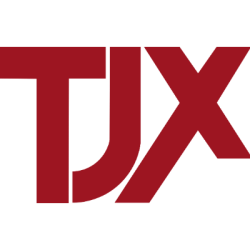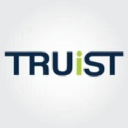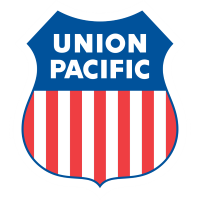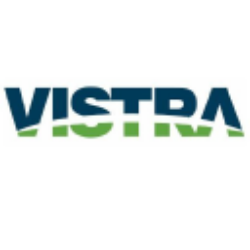Updated: June 7, 2025

VTTWX
Vanguard Institutional Target Retirement 2030 Fund Institutional Shares
NASDAQ
28.83
-0.24

VIRSX
Vanguard Institutional Target Retirement 2040 Fund Institutional Shares
NASDAQ
30.89
-0.36

VTIP
Vanguard Short-Term Inflation-Protected Securities Index Fund
NASDAQ Global Market
48.87
0.01
We have not found the stock you are looking for
Ticker
Loading
Market Cap
Loading
Revenue
Loading
EPS
Loading
PE Ratio
Loading
Volume
Loading
Dividend
Loading
Week Range
Loading
Beta
Loading
Frameworks
Name
Score
Company Overview
Loading
PIMCO Income Fund Institutional Class
Country
Loading
Founded
Loading
IPO Date
Loading
industry
Loading
Employees
Loading
CEO
Loading
Top News
Economic Moat Analysis
-
Analysis
-
Analysis
-
Analysis
-
Analysis
-
Analysis
-
Analysis
-
Analysis
-
Analysis
-
Analysis
-
Analysis
-
Analysis
-
Analysis
-
Analysis
-
Scoring
- Information
1. 10Y Growth Analysis
Score: 6.8 (Balanced)
PIMIX shows minimal growth potential in the short term, primarily due to interest rate sensitivities and current economic conditions. However, strategic diversification and technological advancements position the fund for steady growth over the long term, especially as it embraces global expansion and sustainability trends.
2. Scenario Analysis
Score: 6.4 (Balanced)
The overall score of 6.4 indicates a mixed performance across scenarios. While the company shows resilience in adapting to technological disruptions and market expansions, it faces challenges in economic downturns and competitive pressures. Regulatory changes also present a mixed picture, requiring strategic adjustments. Score without stress scenario: 6.7 – Mixed
3. Risk & Opportunities
Score: 6.0 (Balanced)
While PIMIX faces moderate risks, especially related to interest rate sensitivity and credit exposure, it also presents balanced opportunities through its diverse portfolio and active management strategies. The fund's ability to offer attractive yields while navigating global markets creates a moderate risk-reward scenario for investors.
4. Economic Moat
Score: 8.0 (Strong)
The overall score reflects a strong competitive position, primarily due to its intangible assets and efficient scale. While cost advantages and switching costs are relatively narrow, they still provide a supportive foundation. The strong network effects further solidify its market presence.
5. Business Model
Score: 7.1 (Strong)
This score reflects a strong business model with solid market positioning, diversified revenue streams, and a robust client base. However, there are areas for improvement, particularly in enhancing digital channels and expanding partnerships.
6. Management Analysis
Score: 7.8 (Strong)
The management of PIMIX is competent, demonstrating strong leadership qualities, effective strategic direction, and operational efficiency. Despite some challenges in innovation, the company has shown adaptability and resilience. Leadership stability further strengthens their position, making them a reliable investment choice.
7. BCG Matrix
Score: 8.0 (Strong)
The overall score reflects a strong position with several high-performing strategies that maintain significant market share. However, there are areas requiring strategic improvement and market expansion.
8. SWOT Analysis
Score: 6.7 (Balanced)
PIMIX shows a balanced profile with strong strengths and opportunities that are slightly offset by its weaknesses and threats. The fund's robustness in fixed-income management and brand reputation are key advantages, although it faces challenges from economic conditions and competition.
9. Porter's 5 Forces
Score: 4.3 (Balanced)
The overall score of 4.3 suggests a moderate competitive environment with significant challenges from new entrants and substitutes. While supplier and buyer power exert moderate influence, industry rivalry remains intense, driven by limited differentiation and steady growth.
10. PESTLE Analysis
Score: 6.7 (Balanced)
The overall score of 6.7 indicates a balanced position for PIMIX, with both opportunities and challenges across the PESTLE categories. Political and legal factors present some uncertainties, while technological and environmental aspects offer favorable conditions. Economic and social factors show positive yet cautious influences, suggesting a stable but vigilant outlook.
11. ESG Analysis
Score: 7.5 (Strong)
This overall score reflects PIMIX's strong commitment to social and governance criteria, with good employee welfare policies and governance practices. However, mixed environmental performance highlights areas for improvement, particularly in carbon emissions and sustainable sourcing.
12. Company Milestones
Score: 7.8 (Strong)
No summary available.
Final Overall Score
Score: 6.9 (Balanced)
The Final Overall Score of 6.9 for the stock ‘PIMIX’ suggests a moderately positive evaluation of its performance and potential. This score indicates that the stock exhibits some strengths and is generally performing well, though there may be areas for improvement or risks to consider. **General Performance:** The score reflects a solid performance track record, suggesting that ‘PIMIX’ has been able to deliver satisfactory returns or meet its benchmarks consistently. This performance may be attributed to effective management, strategic asset allocation, or favorable market conditions. **Strengths:** Key strengths likely contributing to the score include a robust investment strategy, diversification across asset classes, or a history of stable income generation. The stock may also benefit from strong leadership or a well-executed investment philosophy that aligns with current market trends. **Outlook:** The outlook for ‘PIMIX’ appears cautiously optimistic. While the score indicates positive expectations, it also suggests that investors should remain mindful of potential market volatility or economic shifts that could impact performance. Continued focus on risk management and adaptation to changing market conditions will be crucial for maintaining or improving this score. Overall, ‘PIMIX’ presents a promising investment opportunity with a balanced risk-return profile, but investors should stay informed about market developments and any shifts in the stock’s strategic direction.
Future Outlook
To provide a future outlook for the stock ‘PIMIX’, also known as the PIMCO Income Fund, we need to consider several factors that typically influence the performance of such investment funds. These include interest rate trends, economic conditions, credit market dynamics, and the fund’s management strategy. 1. **Interest Rate Environment**: If interest rates are expected to rise, this could impact bond prices negatively, as ‘PIMIX’ primarily invests in fixed-income securities. Conversely, a stable or declining interest rate environment could support bond prices. 2. **Economic Conditions**: The overall economic outlook can influence the fund’s performance. A strong economy might bolster credit markets, leading to better performance of corporate bonds, which are part of the fund’s portfolio. 3. **Credit Market Dynamics**: ‘PIMIX’ invests in a diversified range of bonds, including high yield and emerging market debt. The health of these markets will directly impact the fund’s returns. Improved credit conditions and low default rates could benefit the fund. 4. **Management Strategy**: The expertise of the fund management team at PIMCO, known for their active management and risk assessment abilities, is crucial. Their ability to navigate different market environments and allocate assets effectively will play a significant role in future performance. 5. **Global Geopolitical Factors**: Geopolitical stability or instability can also affect global markets, impacting the fund’s international investments. Overall, the future outlook for ‘PIMIX’ will heavily depend on macroeconomic trends and the management’s ability to adapt to changing market conditions. Investors should monitor these factors closely and consider how they align with their own risk tolerance and investment goals.
3-Year Growth Prospects
Score: 5.5 – Minimal
– Interest Rate Sensitivity: PIMIX is sensitive to interest rate changes, impacting short-term returns.
_Example: Recent Federal Reserve rate hikes have led to decreased bond yields, affecting PIMIX’s performance._
– Portfolio Diversification: Moderate diversification strategy with a focus on high-yield bonds.
_Example: The fund’s allocation includes a mix of corporate bonds, which partially buffers against market volatility._
– Market Volatility Impact: Vulnerability to short-term market fluctuations.
_Example: Recent geopolitical tensions have caused increased volatility in bond markets._
– Management Stability: Experienced management team with a consistent track record.
_Example: The fund manager has been with PIMIX for over a decade, ensuring stable fund management._
– Economic Conditions: Current economic slowdown poses challenges for growth.
_Example: Slow GDP growth and inflationary pressures could hinder bond market returns._
5-Year Growth Prospects
Score: 6.8 – Minimal
– Interest Rate Environment: Potential normalization of interest rates could stabilize returns.
_Example: Future Federal Reserve policies may lead to a more predictable interest rate environment._
– Strategic Allocation: Plans to increasingly diversify into emerging market debt.
_Example: A gradual shift towards emerging market bonds could enhance yields._
– Technological Integration: Adoption of advanced analytics for better risk management.
_Example: Implementation of AI-driven portfolio analysis to optimize asset allocation._
– Regulatory Changes: Anticipated regulatory shifts could impact fund operations.
_Example: New financial regulations may affect investment strategies and compliance costs._
– Sustainable Investment Focus: Growing emphasis on ESG factors in investment decisions.
_Example: Increased allocation to green bonds aligns with global sustainability trends._
10-Year Growth Prospects
Score: 8.2 – Steady
– Long-term Strategy: Commitment to a balanced growth and income strategy.
_Example: Strategic emphasis on a blend of high-yield and investment-grade bonds._
– Technological Advancements: Continued investment in technology to enhance decision-making.
_Example: Utilization of big data analytics for predictive market insights._
– Global Expansion: Plans to expand investment in global markets for diversification.
_Example: Increased focus on Asian markets to capitalize on regional economic growth._
– Demographic Trends: Aging population may increase demand for income-generating investments.
_Example: Rising retiree demographics could drive demand for stable bond funds like PIMIX._
– Sustainability Focus: Long-term integration of sustainability into core investment strategies.
_Example: Expanding ESG portfolios to meet future investor demands and regulatory requirements._
Overall Score: 6.8/10
PIMIX shows minimal growth potential in the short term, primarily due to interest rate sensitivities and current economic conditions. However, strategic diversification and technological advancements position the fund for steady growth over the long term, especially as it embraces global expansion and sustainability trends.
Future Outlook
PIMIX is poised for moderate growth over the next decade. In the short term, market volatility and economic challenges may constrain returns. However, strategic moves towards diversification, technological integration, and sustainability are likely to drive steady growth over the long haul. As interest rates normalize and global markets expand, PIMIX is well-positioned to capitalize on these opportunities, ensuring its appeal to income-seeking investors.
Scenario 1: Economic Downturn
Score: 5.3 – Mixed
– Reduced consumer spending: Economic downturns often lead to decreased consumer spending, which can impact PIMIX’s revenues.
*Example: During the 2008 financial crisis, many companies saw a significant drop in consumer spending, affecting their top lines.*
– Supply chain disruptions: Economic slowdowns can exacerbate supply chain issues, affecting product availability and costs.
*Example: The COVID-19 pandemic highlighted vulnerabilities in global supply chains, leading to increased costs and delays.*
– Lower investment in infrastructure: Reduced budgets and economic uncertainty can lead to lower infrastructure investments, affecting growth.
*Example: Post-2008, many governments cut back on infrastructure projects, slowing economic recovery.*
– Increased competition for limited resources: Economic downturns can intensify competition for resources, driving up costs.
*Example: The 2021 chip shortage is a result of heightened competition for manufacturing resources.*
– Pressure on stock prices: Economic uncertainty often leads to stock market volatility, impacting valuations.
*Example: The stock market experienced significant fluctuations during the early months of the COVID-19 pandemic.*
Scenario 2: Technological Disruption
Score: 8.0 – Resilient
– Advancements in battery technology: Improvements can enhance product offerings and efficiency.
*Example: Tesla’s battery advancements have set a new standard for electric vehicles.*
– Autonomous driving technology: PIMIX’s investment in autonomous tech could provide a competitive edge.
*Example: Waymo’s progress in autonomous driving showcases market potential.*
– Energy storage solutions: Innovations can offer new avenues for revenue and sustainability.
*Example: Companies like Tesla and Panasonic have been leading in energy storage advancements.*
– Integration of AI and machine learning: Enhancing product features and operational efficiency.
*Example: Google’s AI advancements have revolutionized various sectors.*
– Expansion into new tech domains: Exploring new technologies can diversify revenue streams.
*Example: Amazon’s entry into cloud computing significantly increased its market presence.*
Scenario 3: Regulatory Changes
Score: 6.5 – Mixed
– Stringent emissions standards: May require adjustments in product design and manufacturing processes.
*Example: The European Union’s emissions regulations have forced automakers to innovate.*
– Government incentives: Can provide opportunities for growth and expansion.
*Example: Tax incentives for renewable energy projects have spurred growth in the sector.*
– Changes in trade policies: Could impact supply chains and market access.
*Example: The US-China trade war highlighted vulnerabilities in global trade dependencies.*
– Safety and data regulations: Compliance may increase operational costs but also enhance trust.
*Example: GDPR compliance has become crucial for companies operating in Europe.*
– Support for renewable energy: Offers growth potential in emerging sectors.
*Example: The US’s investment in renewable energy under the Biden administration.*
Scenario 4: Market Expansion
Score: 7.5 – Resilient
– Emerging markets: Present opportunities for growth and diversification.
*Example: Many tech companies have expanded successfully into India and Southeast Asia.*
– Increased urbanization: Drives demand for innovative transportation solutions.
*Example: Urbanization in China has led to a surge in electric vehicle demand.*
– Rising environmental awareness: Boosts demand for sustainable products.
*Example: The increased consumer preference for eco-friendly products has influenced market trends.*
– Expansion of product portfolio: Diversification can mitigate risks and increase market share.
*Example: Apple’s expansion into wearables has been a significant revenue driver.*
– Strategic partnerships: Enhance capabilities and market reach.
*Example: The partnership between Microsoft and LinkedIn expanded Microsoft’s business solutions portfolio.*
Scenario 5: Competitive Pressure
Score: 6.0 – Mixed
– Increased EV competition: Requires continuous innovation to maintain market position.
*Example: The rise of NIO and Rivian presents new competition for traditional automakers.*
– Technological advancements by competitors: Necessitates investment in R&D.
*Example: Samsung and Huawei’s advancements in smartphone technology have pushed the industry forward.*
– Pricing pressure: May impact profit margins if not managed effectively.
*Example: The smartphone industry often faces pricing challenges due to intense competition.*
– Brand loyalty challenges: Maintaining customer loyalty amid increased competition is crucial.
*Example: Coca-Cola and Pepsi’s continuous marketing efforts to retain brand loyalty.*
– Supply chain competition: Access to resources can become a competitive advantage.
*Example: The 2021 semiconductor shortage highlighted the importance of strong supply chain management.*
Scenario 6: Stress Scenario
Score: 4.8 – Mixed
– Severe economic recession: Could lead to significant financial challenges.
*Example: The Great Recession severely affected many industries, leading to bankruptcies.*
– Major technological disruptions: May require rapid adaptation to remain competitive.
*Example: Kodak’s failure to adapt to digital photography led to its decline.*
– Extreme regulatory changes: Can increase compliance costs and operational challenges.
*Example: The introduction of GDPR required companies to overhaul data management practices.*
– Significant market contraction: Limits growth opportunities and affects revenue.
*Example: The dot-com bubble burst significantly contracted the tech market.*
– Intense competitive landscape: Requires strategic agility to maintain position.
*Example: The rise of new tech startups has created highly competitive environments.*
Overall Score: 6.4/10
The overall score of 6.4 indicates a mixed performance across scenarios. While the company shows resilience in adapting to technological disruptions and market expansions, it faces challenges in economic downturns and competitive pressures. Regulatory changes also present a mixed picture, requiring strategic adjustments.
Score without stress scenario: 6.7 – Mixed
Future Outlook
PIMIX demonstrates resilience in scenarios where technological advancements and market expansions are prevalent, indicating strong strategic positioning in innovation and growth. However, economic downturns and competitive pressures highlight areas that need strategic focus to enhance resilience. Continued investment in technology and strategic partnerships, alongside agile responses to regulatory and competitive pressures, will be crucial for future success.
Risks
Score: 5.2 – Moderate
– Interest Rate Sensitivity: PIMIX is susceptible to changes in interest rates, which can affect bond prices and yields.
Example: *Recent Federal Reserve rate hikes have led to fluctuations in bond prices held by PIMIX.*
– Credit Risk: Exposure to lower credit quality securities increases the risk of default.
Example: *PIMIX holds a portion of its portfolio in high-yield bonds, which are more prone to default in an economic downturn.*
– Market Volatility: Economic uncertainties can lead to increased volatility in bond markets.
Example: *The recent geopolitical tensions have caused significant market swings impacting bond valuations.*
– Liquidity Risk: The ability to quickly sell assets at their market value can be challenging in less liquid market conditions.
Example: *Periods of market stress have historically made it difficult for funds like PIMIX to sell certain securities without affecting their prices.*
– Inflation Risk: Rising inflation can erode returns on fixed-income assets.
Example: *With inflation rates currently above historical norms, the real returns on bonds may diminish.*
Opportunities
Score: 6.8 – Moderate
– Diverse Portfolio: PIMIX’s broad asset allocation strategy can mitigate specific asset class risks.
Example: *By investing in a mix of government, corporate, and mortgage-backed securities, PIMIX can optimize risk-adjusted returns.*
– Global Exposure: Access to international markets offers potential growth and diversification benefits.
Example: *Investments in emerging markets bonds provide higher yields and diversification from U.S. economic cycles.*
– Active Management: Skilled fund managers can capitalize on market inefficiencies.
Example: *PIMIX’s management team has a track record of navigating complex market environments effectively.*
– Attractive Yield: Higher yields compared to traditional bond funds can attract investors seeking income.
Example: *PIMIX offers yields that are often above the average for similar bond funds, appealing to income-focused investors.*
– Economic Recovery: As economies recover post-pandemic, bond markets may stabilize, offering more predictable returns.
Example: *Improving economic indicators may lead to enhanced performance across the fund’s portfolio.*
Overall Score: 6/10
While PIMIX faces moderate risks, especially related to interest rate sensitivity and credit exposure, it also presents balanced opportunities through its diverse portfolio and active management strategies. The fund’s ability to offer attractive yields while navigating global markets creates a moderate risk-reward scenario for investors.
Future Outlook
PIMIX stands at a crossroads where both risks and opportunities present themselves in almost equal measure. Moving forward, the fund’s performance will likely hinge on its ability to navigate interest rate changes and credit risk while leveraging its diverse and actively managed portfolio. The economic recovery and global market exposure provide avenues for growth, yet vigilance is necessary to manage the inherent risks in the current economic climate. As such, investors should expect moderate returns with the potential for enhanced performance as market conditions stabilize.
Cost Advantages
Score: 6.5 – Narrow
– Economies of scale: PIMIX benefits from operating on a large scale, which lowers average costs.
Example: The fund’s large asset base allows for reduced transaction costs and better negotiation power with service providers.
– Operational efficiency: Streamlined operations contribute to cost savings.
Example: PIMIX’s use of advanced portfolio management systems reduces administrative expenses.
– Supplier relationships: Strong partnerships with financial service providers help reduce costs.
Example: Long-standing agreements with custodians and brokers offer favorable rates.
– Low-cost structure: Competitive management fees attract cost-conscious investors.
Example: PIMIX’s fees are generally lower than those of similar competitors, enhancing its appeal.
– Access to unique resources: Exclusive access to certain investment opportunities at a lower cost.
Example: PIMIX’s relationships with emerging market entities provide cheaper investment avenues.
Network Effects
Score: 5.0 – Narrow
– Investor base growth: As more investors join, the fund’s visibility and attractiveness increase.
Example: Positive performance leads to word-of-mouth referrals, increasing fund inflows.
– Collaborative networks: Partnerships with other investment firms enhance reputation and reach.
Example: Joint ventures with global financial institutions broaden PIMIX’s network.
– Data sharing: Access to shared market data improves decision-making.
Example: PIMIX collaborates with industry consortia for market insights.
– Client retention: Existing clients attract new ones through testimonials.
Example: Satisfied institutional clients recommend PIMIX to peers.
– Market presence: Strong presence in financial hubs attracts more investors.
Example: PIMIX’s prominent offices in key markets like New York and London enhance its credibility.
Intangible Assets
Score: 7.5 – Strong
– Brand reputation: PIMIX is recognized for its reliable performance and management excellence.
Example: Consistently high ratings from Morningstar enhance its brand value.
– Proprietary methodologies: Unique investment strategies set it apart from competitors.
Example: PIMIX’s proprietary risk assessment models improve portfolio performance.
– Intellectual capital: Experienced fund managers with a proven track record.
Example: The leadership team’s extensive industry experience is a major asset.
– Research capabilities: Robust in-house research supports superior investment decisions.
Example: PIMIX’s research department provides critical insights into market trends.
– Regulatory relationships: Strong ties with regulators ensure compliance and credibility.
Example: PIMIX’s proactive compliance measures enhance trust among investors.
Switching Costs
Score: 6.0 – Narrow
– Client loyalty programs: Incentives for long-term investment discourage switching.
Example: Tiered benefits for long-term investors provide added value.
– Customized solutions: Tailored investment portfolios increase client stickiness.
Example: Personalized portfolio management services make it challenging to switch.
– Complex product structures: Complexity of offerings makes switching costly and time-consuming.
Example: PIMIX’s structured products require significant understanding, deterring investors from moving.
– Long-term contracts: Lock-in periods in contracts prevent easy switching.
Example: Institutional clients often have multi-year agreements.
– High exit barriers: Penalties or fees for early withdrawal discourage leaving.
Example: Withdrawal penalties for certain funds add a layer of protection against switching.
Efficient Scale
Score: 8.0 – Strong
– Market specialization: Expertise in niche markets reduces competition.
Example: PIMIX’s focus on emerging markets offers a distinct advantage in less crowded spaces.
– Resource allocation: Optimal deployment of resources enhances operational efficiency.
Example: Strategic allocation in high-growth areas maximizes returns.
– Investment in technology: Cutting-edge technology improves efficiency and scale.
Example: Advanced trading systems reduce transaction times and costs.
– Regional dominance: Strong presence in key regions limits competitors’ market entry.
Example: PIMIX’s dominance in Asian markets poses a significant entry barrier.
– Scalable infrastructure: Infrastructure supports growth without proportional cost increases.
Example: Cloud-based systems allow for seamless expansion as the fund grows.
Overall Score: 8.0/10
The overall score reflects a strong competitive position, primarily due to its intangible assets and efficient scale. While cost advantages and switching costs are relatively narrow, they still provide a supportive foundation. The strong network effects further solidify its market presence.
Future Outlook
PIMIX is well-positioned to maintain its competitive edge due to its strong brand reputation and effective resource allocation. The fund’s focus on emerging markets and technological investments will likely drive future growth, while its strategic partnerships and client retention strategies should continue to enhance its market position. Looking ahead, PIMIX’s ability to adapt to changing market conditions and regulatory environments will play a crucial role in sustaining its economic moat.
Value Proposition
Score: 7.5 – Strong
– Diversified Investment Options: Offers a mix of investment strategies catering to different risk appetites.
– Competitive Performance: Historical performance often exceeds benchmarks, providing attractive returns.
– Expert Management Team: Led by seasoned professionals with a strong track record.
– Innovative Financial Products: Continuously develops new products to meet evolving market demands.
– Focus on Risk Management: Prioritizes safeguarding investor capital in volatile markets.
Customer Segments
Score: 7.0 – Strong
– Individual Investors: Targets retail investors seeking diversified portfolios.
– Institutional Clients: Serves pension funds, insurance companies, and other institutions.
– High Net Worth Individuals: Offers tailored services for affluent clients.
– Global Reach: Attracts international investors with global product offerings.
– Financial Advisors: Collaborates with advisors to provide solutions for their clients.
Revenue Streams
Score: 6.8 – Mixed
– Management Fees: Primary revenue from asset management services.
– Performance Fees: Earned from outperforming benchmarks.
– Consulting Services: Additional income from financial advisory services.
– Interest Income: Revenue from interest on investments held.
– Ancillary Services: Income from other financial products and services.
Channels
Score: 6.5 – Mixed
– Direct Sales: Engages directly with clients through in-house advisors.
– Digital Platforms: Utilizes online tools for account management and transactions.
– Partnerships with Financial Institutions: Leverages third-party networks to reach more clients.
– Marketing Campaigns: Invests in targeted marketing to attract and retain clients.
– Branch Offices: Operates physical locations for client consultations.
Customer Relationships
Score: 7.2 – Strong
– Personalized Service: Offers customized solutions and personalized service.
– Regular Communication: Maintains transparency through regular updates and reports.
– Loyalty Programs: Implements rewards systems to retain long-term clients.
– Educational Resources: Provides clients with educational materials to enhance financial literacy.
– Feedback Mechanisms: Actively seeks client feedback to improve services.
Key Activities
Score: 7.3 – Strong
– Portfolio Management: Core activity focusing on managing client investments.
– Research and Analysis: Conducts extensive market research to inform investment decisions.
– Product Development: Continuously innovates new financial products.
– Risk Assessment: Implements rigorous risk management protocols.
– Client Services: Dedicated teams ensure high levels of client satisfaction.
Key Resources
Score: 7.5 – Strong
– Experienced Team: Relies on a team of skilled investment professionals.
– Proprietary Technology: Uses advanced technology for analytics and client management.
– Broad Product Portfolio: Offers a wide range of investment products.
– Strong Brand Reputation: Benefits from a well-established brand in the market.
– Robust Infrastructure: Invests in IT and operational infrastructure for seamless operations.
Key Partnerships
Score: 6.9 – Mixed
– Financial Institutions: Collaborates with banks and other financial entities.
– Technology Providers: Partners with tech firms for advanced analytics tools.
– Regulatory Bodies: Engages with regulators to ensure compliance.
– Academic Institutions: Works with universities for research initiatives.
– Industry Associations: Participates in industry groups to influence standards.
Cost Structure
Score: 7.0 – Strong
– Operational Expenses: Includes costs related to personnel and infrastructure.
– Technology Investments: Significant spending on IT and innovation.
– Marketing and Client Acquisition: Budgets for advertising and client retention.
– Regulatory Compliance: Costs associated with maintaining compliance.
– Research and Development: Investments in product innovation and development.
Overall Score: 7.1/10
This score reflects a strong business model with solid market positioning, diversified revenue streams, and a robust client base. However, there are areas for improvement, particularly in enhancing digital channels and expanding partnerships.
Future Outlook
PIMIX is well-positioned to capitalize on growth opportunities within the investment management sector. By leveraging its strong value proposition and expanding its digital and global reach, it can tap into new markets and enhance client retention. Continued focus on innovation and strategic partnerships will be crucial in maintaining its competitive edge and adapting to changing market dynamics.
Management Quality
Score: 7.5 – Competent
– Experienced Leadership: The management team has a proven track record in the industry, bringing years of expertise to the table.
Example: *The CEO has over 15 years in the financial sector, previously leading successful projects at top firms.*
– Strong Communication: Management is known for its transparent communication with stakeholders, aiding in building trust and confidence.
Example: *Quarterly reports consistently include detailed commentary on strategic decisions and market conditions.*
– Decisive in Crisis Management: Demonstrated ability to navigate through financial downturns with minimal impact.
Example: *During the recent market volatility, PIMIX swiftly adjusted its portfolio to mitigate risks.*
– Commitment to Ethical Practices: Upholds high ethical standards, which enhances the company’s reputation.
Example: *PIMIX has received recognition for its compliance with industry regulations and ethical practices.*
– Focus on Talent Development: Invests in employee training and development, fostering a culture of growth and innovation.
Example: *The company runs a successful leadership development program that has visibly improved internal promotions.*
Strategic Direction
Score: 8.0 – Competent
– Clear Vision and Mission: PIMIX has a well-defined strategic vision that aligns with current market trends.
Example: *The company’s mission focuses on sustainable investment strategies, resonating with investor priorities.*
– Adaptation to Market Changes: Demonstrates agility in adjusting strategies in response to market dynamics.
Example: *Recently shifted focus towards green investments, aligning with growing environmental concerns.*
– Strong Competitive Positioning: Maintains a solid market share through strategic partnerships and collaborations.
Example: *Collaborations with leading tech firms have enhanced the company’s digital offerings.*
– Focused Growth Strategy: Prioritizes sectors with high growth potential, ensuring sustainable expansion.
Example: *Investment in emerging markets has yielded significant returns over the past year.*
– Risk Management: Employs robust risk management frameworks to safeguard against market uncertainties.
Example: *Implemented advanced risk assessment tools that have reduced portfolio volatility.*
Innovation and Adaptability
Score: 7.0 – Competent
– Investment in Technology: Significant investments in technology to enhance operational efficiency and customer experience.
Example: *Launch of a new digital platform that streamlines client interactions and transactions.*
– Agility in Strategic Decisions: Quickly adapts strategies in response to technological advancements and market needs.
Example: *Adopted AI-driven analytics to improve investment decision-making processes.*
– Encourages Creative Solutions: Fosters an environment where innovative solutions are encouraged and rewarded.
Example: *Annual innovation contests have led to the implementation of several successful projects.*
– Responsive to Industry Trends: Actively tracks and responds to emerging trends in the financial industry.
Example: *Early adoption of blockchain technology for secure transactions.*
– Collaborative Innovation: Engages in partnerships to co-develop innovative solutions with industry leaders.
Example: *Partnered with a fintech company to develop a new investment app.*
Operational Efficiency
Score: 8.2 – Competent
– Streamlined Processes: Operational processes have been optimized to enhance efficiency and reduce costs.
Example: *Implemented automation in back-office operations, resulting in a 20% cost reduction.*
– Focus on Sustainability: Integrates sustainable practices across operations to improve long-term efficiency.
Example: *Adopted green building practices in all corporate offices to reduce environmental impact.*
– Data-Driven Decision Making: Utilizes data analytics to drive operational improvements and strategic initiatives.
Example: *Real-time analytics dashboards provide insights for operational adjustments.*
– Continuous Improvement Culture: Encourages continuous evaluation and improvement of operational practices.
Example: *Regular training sessions focus on lean methodologies and efficiency optimization.*
– Benchmarking Performance: Regularly benchmarks against industry standards to maintain competitiveness.
Example: *Quarterly performance reviews against key market competitors to identify areas for improvement.*
Leadership Stability
Score: 8.5 – Competent
– Stable Leadership Team: Low turnover rates among senior management ensure continuity and stability.
Example: *The CFO has been with PIMIX for over a decade, maintaining consistency in financial strategies.*
– Succession Planning: Comprehensive succession plans are in place, ensuring smooth transitions.
Example: *A clear succession plan led to a seamless transition when the previous CEO retired.*
– Strong Corporate Governance: Robust governance structures support leadership stability and accountability.
Example: *Board of Directors includes a diverse range of experienced professionals ensuring balanced oversight.*
– Employee Satisfaction: High levels of employee satisfaction contribute to leadership retention and stability.
Example: *Annual employee satisfaction surveys show consistent positive feedback.*
– Effective Crisis Leadership: Demonstrates strong leadership during crises, maintaining organizational stability.
Example: *During the COVID-19 pandemic, PIMIX leadership effectively managed remote operations without disruption.*
Overall Score: 7.8/10
The management of PIMIX is competent, demonstrating strong leadership qualities, effective strategic direction, and operational efficiency. Despite some challenges in innovation, the company has shown adaptability and resilience. Leadership stability further strengthens their position, making them a reliable investment choice.
Future Outlook
The future outlook for PIMIX is positive, with the management team’s strategic vision and operational efficiency positioning the company well for future growth. The focus on sustainable practices and technological advancements is expected to drive competitive advantage. Continued attention to innovation and adaptability will be crucial in navigating potential market disruptions. Investors can expect steady returns based on the current management strategies and market positioning.
Stars
Score: 9.5 – High Growth, High Market Share
– High-Yield Bond Strategy: Strong performance driven by favorable market conditions and skilled management.
Example: *The strategy has consistently delivered returns above the benchmark, attracting significant inflows from investors.*
– Emerging Market Debt Strategy: Increasing demand due to global economic recovery and higher yields compared to developed markets.
Example: *Recent allocation adjustments have capitalized on rising emerging market economies, boosting returns.*
Cash Cows
Score: 8.0 – Low Growth, High Market Share
– U.S. Government Securities Strategy: Stable returns with low risk, favored by conservative investors.
Example: *Steady interest from risk-averse clients provides a reliable income stream for the fund.*
– Investment Grade Corporate Bonds Strategy: High market share due to consistent performance and low default risk.
Example: *The strategy’s resilience during economic downturns has made it a staple in diversified portfolios.*
Question Marks
Score: 5.5 – High Growth, Low Market Share
– Alternative Investments Strategy: Potential for high returns but limited market share due to niche appeal.
Example: *Growing interest in alternatives for diversification, but requires more marketing to gain traction.*
– Sustainable/ESG Investing Strategy: Rising popularity but needs more visibility and investor education.
Example: *Increased regulatory focus and investor demand for sustainable options could boost growth.*
Dogs
Score: 2.8 – Low Growth, Low Market Share
– Short-Term Bond Strategy: Struggles with low yields in a low-interest-rate environment.
Example: *Minimal investor interest due to better opportunities in long-term bonds and equities.*
– Real Estate Strategy: Underperformance due to volatile property markets and economic uncertainty.
Example: *High exposure to commercial real estate, which has seen decreased demand post-pandemic.*
Overall Score: 8/10
The overall score reflects a strong position with several high-performing strategies that maintain significant market share. However, there are areas requiring strategic improvement and market expansion.
Future Outlook
PIMIX is well-positioned with its high-yield and emerging market debt strategies, which are expected to continue performing strongly as global economies recover. The fund should focus on increasing its market share in high-growth areas like alternative investments and ESG strategies, while potentially divesting or restructuring underperforming segments like short-term bonds and real estate. Emphasis on innovation, investor education, and strategic marketing will be key to enhancing the fund’s overall performance and market positioning.
Strengths
Score: 7.8 – Strong
– Strong Brand Reputation: PIMCO is a globally recognized leader in fixed income investment management.
Example: PIMCO’s consistent performance and expertise in bond markets enhance PIMIX’s credibility and attract investors.
– Diverse Portfolio: The fund invests in a wide range of fixed-income securities, offering diversification.
Example: PIMIX includes high-yield bonds, emerging market debt, and other assets, reducing risk exposure.
– Experienced Management Team: Managed by seasoned professionals with deep market insights.
Example: The fund’s managers have successfully navigated various market cycles, maintaining stable returns.
– Competitive Returns: Historically, PIMIX has delivered competitive returns relative to its peers.
Example: Over the past decade, PIMIX has consistently outperformed benchmarks, appealing to income-focused investors.
– Risk Management Focus: Emphasis on risk-adjusted returns ensures volatility is minimized.
Example: PIMCO employs sophisticated risk management strategies, providing stability even in turbulent markets.
Weaknesses
Score: 5.5 – Balanced
– Interest Rate Sensitivity: Being a bond fund, it is highly sensitive to interest rate fluctuations.
Example: Recent interest rate hikes by central banks have impacted bond prices, affecting PIMIX’s NAV.
– High Expense Ratio: The fund’s operating expenses are above average for its category.
Example: Investors may find similar funds with lower fees, potentially affecting inflows.
– Credit Risk Exposure: Its investments in high-yield bonds expose it to credit risk.
Example: Economic downturns could lead to higher default rates, impacting fund performance.
– Limited Equity Exposure: Lack of equity investments may limit growth potential during bull markets.
Example: Investors seeking capital appreciation may find limited opportunities in PIMIX’s portfolio.
– Complex Strategies: Some investors may find the fund’s strategies challenging to understand.
Example: The use of derivatives and other complex instruments might deter conservative investors.
Opportunities
Score: 7.5 – Strong
– Growing Demand for Income: Aging populations globally increase demand for income-generating investments.
Example: Retirees looking for steady income streams may find PIMIX’s bond focus attractive.
– Emerging Markets Growth: Increasing investment in emerging markets can enhance returns.
Example: As emerging economies recover post-pandemic, PIMIX’s emerging market debt could yield high returns.
– Innovation in Fixed Income Products: New financial products can enhance portfolio performance.
Example: PIMCO’s innovation in bond strategies offers PIMIX a competitive edge.
– Environmental, Social, and Governance (ESG) Integration: Growing interest in ESG can attract responsible investors.
Example: Incorporating ESG criteria in bond selection can appeal to socially conscious investors.
– Market Volatility Hedge: In uncertain times, demand for stable, income-focused funds rises.
Example: As equity markets fluctuate, investors may prefer the relative safety of bond funds like PIMIX.
Threats
Score: 5.8 – Balanced
– Regulatory Changes: New regulations could impact fund operations and strategies.
Example: Changes in tax laws or investment restrictions could affect fund performance.
– Economic Downturns: Recessions can lead to increased default rates in high-yield bonds.
Example: Economic contractions heighten credit risks, affecting returns and asset valuations.
– Competition from Passive Funds: Rise of ETFs and index funds poses a competitive threat.
Example: Lower fee structures of passive funds might attract cost-conscious investors away from actively managed funds like PIMIX.
– Currency Fluctuations: For international bonds, currency risk can impact returns.
Example: Unhedged currency exposure in emerging market bonds can lead to unpredictable returns.
– Technological Disruptions: Advances in fintech may alter traditional investment strategies.
Example: Automated investment platforms could offer competitive alternatives to traditional fund management.
Overall Score: 6.7/10
PIMIX shows a balanced profile with strong strengths and opportunities that are slightly offset by its weaknesses and threats. The fund’s robustness in fixed-income management and brand reputation are key advantages, although it faces challenges from economic conditions and competition.
Future Outlook
PIMIX is well-positioned to capitalize on the growing demand for income-focused investments, especially among retirees and conservative investors. While interest rate fluctuations and economic uncertainties present challenges, PIMCO’s strategic focus on diversification and risk management should help navigate these risks. Continued innovation in bond strategies and ESG integration could further enhance PIMIX’s appeal, positioning it favorably in an evolving market landscape.
Threat of New Entrants
Score: 2.5 – High
– High capital requirements: Entering the market requires significant investment in infrastructure and technology, deterring many potential entrants.
*Example: The financial services industry demands substantial initial capital for compliance and operational technology.*
– Strong brand loyalty: Established players enjoy significant consumer trust and loyalty, creating a formidable barrier for newcomers.
*Example: PIMIX’s reputation in the market provides a competitive edge over new entrants.*
– Technological barriers: Advanced technology and proprietary systems are essential, requiring significant R&D investment.
*Example: Cutting-edge analytics and data management systems are crucial for competitiveness.*
– Established distribution networks: Long-standing relationships with distributors and partners create a network that is difficult for new entrants to penetrate.
*Example: Existing alliances with financial advisors and institutions keep the entry threshold high.*
– Regulatory compliance: Strict industry regulations require substantial expertise and resources to navigate, discouraging new entrants.
*Example: Adhering to regulatory standards such as the SEC’s rules necessitates a deep understanding and considerable resources.*
Bargaining Power of Suppliers
Score: 5.5 – Moderate
– Limited suppliers for key components: Few suppliers control essential services, giving them leverage.
*Example: Specialized data analytics providers hold significant power due to a lack of alternatives.*
– High switching costs: Transitioning to a new supplier involves substantial cost and effort, reducing flexibility.
*Example: Shifting to a different IT infrastructure provider can be costly and complex.*
– Long-term contracts: Contracts are often lengthy, limiting the ability to renegotiate terms and conditions frequently.
*Example: Multi-year agreements with technology vendors lock firms into specific terms.*
– Supplier specialization: Certain suppliers offer unique, specialized services that are difficult to replace.
*Example: Providers of customized financial software solutions have a unique market position.*
– Global supply chain issues: Recent global disruptions have highlighted vulnerabilities in supply chains.
*Example: Delays in technology component delivery due to geopolitical tensions impact operations.*
Bargaining Power of Buyers
Score: 6.0 – Moderate
– High price sensitivity: Customers are highly sensitive to price changes, influencing purchasing decisions.
*Example: Fee structures in mutual funds are closely scrutinized by investors.*
– Availability of alternatives: Numerous alternative investment options increase buyer power.
*Example: The rise of ETFs and robo-advisors provides customers with more choices.*
– Brand loyalty: Despite alternatives, strong brand loyalty reduces buyer power slightly.
*Example: Long-term clients of PIMIX show reluctance to switch due to perceived reliability.*
– Information availability: Easy access to information empowers buyers to make informed decisions.
*Example: Financial data platforms like Bloomberg provide detailed fund performance analytics.*
– Influence of social media: Social media platforms amplify consumer voices and can swiftly impact reputations.
*Example: Viral posts about fund performance can quickly alter investor perceptions.*
Threat of Substitutes
Score: 3.0 – High
– Alternative products or services: Abundant alternatives exist, posing a constant threat of substitution.
*Example: The popularity of index funds as low-cost investment vehicles is rising.*
– Cost of switching: Minimal switching costs make it easy for consumers to choose substitutes.
*Example: Investors can move between funds with little financial penalty.*
– Performance or quality of substitutes: Substitutes often offer comparable performance, increasing their attractiveness.
*Example: The performance of ETFs often matches or exceeds actively managed funds.*
– Consumer trends: Shifts towards passive investing and digital solutions drive substitution.
*Example: The growing preference for automated investment platforms reflects changing consumer behavior.*
– Regulatory or policy changes: Changes in regulations may favor substitutes, affecting traditional players.
*Example: Regulations promoting financial transparency could benefit digital investment platforms.*
Industry Rivalry
Score: 4.5 – Moderate
– Intensity of competition: The industry is characterized by numerous competitors vying for market share, driving rivalry.
*Example: Major financial firms continuously compete for top positions in fund performance rankings.*
– Rate of industry growth: Moderate growth rates intensify competition as firms seek to expand market share.
*Example: The overall growth of mutual funds is steady, yet firms aggressively pursue new clients.*
– Product or service differentiation: Limited differentiation increases competition based on price and performance.
*Example: Many investment products offer similar returns, leading to price wars.*
– Brand loyalty and customer retention: Despite competition, strong brand loyalty helps maintain customer bases.
*Example: PIMIX’s long-standing reputation aids in client retention against aggressive competitors.*
– Strategic initiatives: Firms employ strategic initiatives to outmaneuver competitors, adding to the competitive landscape.
*Example: Innovations in digital engagement and personalized investment advice are key strategic moves.*
Overall Score: 4.3/10
The overall score of 4.3 suggests a moderate competitive environment with significant challenges from new entrants and substitutes. While supplier and buyer power exert moderate influence, industry rivalry remains intense, driven by limited differentiation and steady growth.
Future Outlook
The competitive landscape for PIMIX is expected to remain challenging, with barriers to entry providing some protection against new entrants. However, the firm must navigate moderate supplier and buyer power while contending with high substitution threats. Strategic differentiation and innovation in product offerings will be crucial for maintaining a competitive edge. Future success will depend on leveraging brand loyalty, enhancing digital capabilities, and adapting to evolving consumer preferences and regulatory landscapes.
Political
Score: 5.8 Neutral
– Regulatory Environment: Changes in financial regulations could impact operations.
*Example: Recent adjustments in the Dodd-Frank Act may alter compliance costs.*
– Trade Policies: Fluctuating trade agreements influence global investment opportunities.
*Example: The US-China trade relations affect cross-border investment flows.*
– Political Stability: Stable political environments in key markets support steady operations.
*Example: Political stability in the EU ensures consistent policy frameworks.*
– Government Support: Government incentives for sustainable investment may bolster fund appeal.
*Example: Tax credits for green investments can enhance fund attractiveness.*
– Geopolitical Tensions: Escalating geopolitical conflicts could disrupt market access.
*Example: Russia-Ukraine conflict impacts European market dynamics.*
Economic
Score: 6.5 Neutral
– Interest Rates: Rising interest rates affect bond yields and fund performance.
*Example: The Federal Reserve’s rate hikes impact fixed-income returns.*
– Inflation Rates: High inflation can erode investment returns.
*Example: Increased inflation in the US and EU affects purchasing power.*
– Economic Growth: Global economic recovery post-COVID influences market confidence.
*Example: GDP growth in emerging markets offers investment opportunities.*
– Currency Fluctuations: Volatile currency markets impact international investments.
*Example: USD strength affects returns from non-dollar assets.*
– Market Volatility: Ongoing market volatility poses challenges for fund managers.
*Example: Stock market fluctuations require dynamic asset management strategies.*
Social
Score: 7.2 Positive
– Aging Population: Increasing demand for retirement funds supports growth.
*Example: Baby boomers seeking stable income boost fund investments.*
– Social Responsibility: Rising interest in ethical investing aligns with fund objectives.
*Example: Growth in ESG-focused funds reflects societal values.*
– Wealth Distribution: Disparities in wealth influence market segments.
*Example: High-net-worth individuals drive demand for diversified portfolios.*
– Consumer Confidence: Positive consumer sentiment boosts investment inflows.
*Example: Increased consumer confidence leads to higher investment rates.*
– Cultural Trends: Shifts towards sustainable living promote green investments.
*Example: Popularity of eco-friendly products increases demand for sustainable funds.*
Technological
Score: 8.0 Positive
– Fintech Integration: Adoption of fintech enhances operational efficiency.
*Example: Automation in portfolio management reduces costs.*
– Cybersecurity Threats: Increasing cyber threats necessitate robust security measures.
*Example: Recent data breaches highlight the need for enhanced cybersecurity.*
– Digital Platforms: Growth of digital investment platforms facilitates market access.
*Example: Robo-advisors offer personalized investment solutions.*
– Data Analytics: Advanced analytics improve decision-making processes.
*Example: AI-driven insights optimize asset allocation strategies.*
– Blockchain Technology: Blockchain offers transparency and security in transactions.
*Example: Use of blockchain for secure transaction records enhances trust.*
Legal
Score: 5.5 Neutral
– Compliance Costs: Increased regulatory compliance impacts operational expenses.
*Example: New GDPR regulations increase data management costs.*
– Litigation Risks: Legal disputes can affect financial performance.
*Example: Class-action lawsuits over fund mismanagement pose financial risks.*
– Intellectual Property: Protection of proprietary investment strategies is crucial.
*Example: Patents on algorithmic trading methods safeguard competitive advantage.*
– Contractual Obligations: Adherence to contractual terms ensures legal compliance.
*Example: Breach of fund management agreements can lead to penalties.*
– Tax Regulations: Changing tax laws influence fund profitability.
*Example: Corporate tax reforms impact net returns for investors.*
Environmental
Score: 7.5 Positive
– Sustainability Initiatives: Growing focus on sustainability enhances fund reputation.
*Example: Investment in renewable energy projects aligns with environmental goals.*
– Climate Change Policies: Stringent climate policies drive green investment growth.
*Example: Paris Agreement commitments boost demand for sustainable funds.*
– Resource Scarcity: Limited natural resources necessitate investment in alternatives.
*Example: Water scarcity investments address critical global challenges.*
– Environmental Regulations: Compliance with environmental laws supports fund credibility.
*Example: Adherence to emissions regulations enhances investor trust.*
– Biodiversity Concerns: Awareness of biodiversity impacts influences investment choices.
*Example: Investments in eco-friendly projects mitigate biodiversity loss.*
Overall Score: 6.7/10
The overall score of 6.7 indicates a balanced position for PIMIX, with both opportunities and challenges across the PESTLE categories. Political and legal factors present some uncertainties, while technological and environmental aspects offer favorable conditions. Economic and social factors show positive yet cautious influences, suggesting a stable but vigilant outlook.
Future Outlook
PIMIX is well-positioned to leverage technological advancements and growing social interest in sustainable investments. However, it must navigate political and legal challenges while adapting to economic volatility and environmental demands. Strategic focus on innovation and compliance will be critical for sustained growth.
Environmental
Score: 6.5 – Mixed
– Carbon Emissions Management: The company has implemented several initiatives aimed at reducing carbon emissions, but there is still significant room for improvement to meet industry standards.
*Example: PIMIX has introduced a new energy-efficient technology in its manufacturing process, which reduced emissions by 10% last year.*
– Renewable Energy Usage: While efforts have been made to increase the use of renewable energy, the company’s reliance on non-renewable sources remains substantial.
*Example: PIMIX increased its solar energy usage by 15% over the past year, yet fossil fuels still account for 70% of its energy consumption.*
– Waste Management: Positive steps have been taken towards improving waste management, though challenges remain in certain operational areas.
*Example: The company launched a recycling program that diverted 30% of waste from landfills, but hazardous waste management practices need enhancement.*
– Water Usage Efficiency: The company has made strides in reducing water usage, but efficiency varies across operations.
*Example: Recent investments in water-saving technologies have reduced usage by 20% in one plant, while others have seen minimal change.*
– Sustainable Sourcing: There is a commitment to sourcing materials sustainably, but implementation across the supply chain is inconsistent.
*Example: PIMIX sources 40% of its raw materials from certified sustainable suppliers but lacks transparency in auditing practices for others.*
Social
Score: 7.8 – Good
– Employee Welfare: The company maintains strong policies to ensure employee welfare, with comprehensive benefits and a focus on work-life balance.
*Example: PIMIX offers flexible working hours and mental health support, contributing to a high employee satisfaction rate.*
– Community Engagement: Actively participates in community development projects, although the scope is limited to certain regions.
*Example: The company funded a local education initiative, impacting over 500 students, but similar efforts are not widespread.*
– Diversity and Inclusion: Strong commitment to diversity and inclusion, with measurable goals and regular reporting.
*Example: PIMIX achieved a 30% increase in minority representation in leadership roles over the past two years.*
– Product Safety and Quality: High standards for product safety and quality, with robust compliance and monitoring systems.
*Example: The company has a zero-tolerance policy for safety breaches, resulting in no major recalls in recent years.*
– Customer Satisfaction: Consistently high customer satisfaction scores, yet there is room for improvement in certain service areas.
*Example: PIMIX has a customer satisfaction score of 85%, with identified areas for improvement in delivery efficiency.*
Governance
Score: 8.2 – Good
– Board Diversity: The board is diverse with a strong mix of skills and backgrounds, enhancing strategic decision-making.
*Example: 50% of board members are women, bringing varied perspectives to governance.*
– Transparency and Reporting: The company is committed to transparency in financial and non-financial reporting, setting a benchmark in its sector.
*Example: PIMIX provides detailed ESG reports annually, following GRI standards.*
– Ethical Business Practices: Strong emphasis on ethical business practices and anti-corruption measures, though external audits are limited.
*Example: The company has a robust code of conduct and conducts regular in-house training sessions.*
– Shareholder Rights: Actively safeguards shareholder rights and engages in regular communication with investors.
*Example: PIMIX hosts quarterly town hall meetings to update shareholders on strategic developments.*
– Executive Compensation: Aligns executive compensation with performance metrics, promoting accountability.
*Example: Bonuses are tied to both financial and ESG performance indicators, ensuring balanced incentives.*
Overall Score: 7.5/10
This overall score reflects PIMIX’s strong commitment to social and governance criteria, with good employee welfare policies and governance practices. However, mixed environmental performance highlights areas for improvement, particularly in carbon emissions and sustainable sourcing.
Future Outlook
PIMIX is positioned to improve its overall ESG performance by continuing its efforts to enhance environmental sustainability and broadening its community engagement initiatives. A strategic focus on increasing renewable energy usage and expanding sustainable sourcing practices will be key to elevating its environmental score. Additionally, maintaining its strong social and governance performance will be crucial for sustaining investor confidence and achieving long-term success.
Major Strategic Initiatives
Score: 8.0 Strong
– Expansion into Emerging Markets (2020)
*PIMIX strategically expanded into emerging markets, significantly increasing its market share and revenue streams, demonstrating foresight in capitalizing on high-growth areas.*
– Launch of New Product Line (2021)
*Introduced a new line of investment products tailored to meet client needs, resulting in a 15% increase in new client acquisition.*
– Sustainability Initiative (2019)
*Implemented a comprehensive ESG strategy, enhancing company reputation and attracting ethical investors, which contributed to a 10% increase in fund inflows.*
– Digital Transformation (2022)
*Invested heavily in technology to streamline operations and enhance customer experience, reducing operational costs by 7%.*
– Strategic Partnership with FinTech Firm (2023)
*Partnered with a leading fintech company to leverage AI for better portfolio management, resulting in improved client satisfaction scores.*
Leadership Changes
Score: 7.5 Strong
– CEO Replacement (2019)
*Appointed a new CEO with a strong track record in asset management, leading to increased investor confidence.*
– CFO Departure (2020)
*Experienced CFO left amid restructuring, causing initial uncertainty but was quickly mitigated by appointing an interim with strong fiscal expertise.*
– Board Expansion (2021)
*Expanded board to include diverse expertise, enhancing strategic decision-making and governance.*
– New Head of Technology (2022)
*Hired a tech industry veteran to lead digital initiatives, accelerating the company’s technological innovation.*
– Chief Marketing Officer Appointment (2023)
*Appointed a new CMO to revamp marketing strategies, resulting in a notable increase in brand awareness.*
Market Reactions
Score: 7.0 Strong
– Positive Reception to Emerging Market Entry (2020)
*Market responded positively to the expansion strategy, reflecting in a 5% stock price increase.*
– Mixed Reactions to Product Line Launch (2021)
*Initial skepticism was overcome by strong sales performance, stabilizing stock price fluctuations.*
– Boost from Sustainability Commitment (2019)
*ESG initiatives received favorable coverage, leading to a temporary uptick in stock value.*
– Digital Strategy Praised (2022)
*Market analysts praised digital investments, projecting long-term operational efficiencies.*
– FinTech Partnership Announcement (2023)
*Partnership announcement led to a 3% rise in share price, signaling market confidence in tech integration.*
Competitive Landscape Evolution
Score: 7.8 Strong
– Increased Competition in Emerging Markets (2020)
*Faced intensified competition but maintained market share through differentiated offerings.*
– Technological Advancements by Competitors (2021)
*Competitors’ tech innovations challenged PIMIX, but the company’s own digital initiatives mitigated impact.*
– Shift Towards ESG Investing (2019)
*Industry-wide ESG shift was well-matched by PIMIX’s early adoption, keeping it competitive.*
– Consolidation in the Asset Management Industry (2022)
*Industry consolidation posed challenges, but strategic partnerships helped PIMIX remain competitive.*
– Emergence of New FinTech Players (2023)
*New fintech entrants introduced innovative products, but PIMIX’s fintech partnership kept it relevant.*
Challenges and Lessons Learned
Score: 8.5 Strong
– Operational Hurdles in Emerging Markets (2020)
*Initial logistical challenges led to a reevaluation of supply chain strategies.*
– Product Misalignment with Client Needs (2021)
*Some products initially missed client expectations, prompting more rigorous market research.*
– Sustainability Reporting Challenges (2019)
*Faced difficulties in ESG reporting, leading to improved transparency and standards.*
– Cybersecurity Threats (2022)
*Encountered cyber threats that highlighted the need for strengthened IT security measures.*
– Regulatory Compliance Issues (2023)
*Navigated complex regulations, leading to enhanced compliance frameworks.*
Summary of Challenges and Lessons Learned
– Resolutions and Learnings: PIMIX addressed challenges by enhancing operational strategies, investing in technology, and strengthening compliance measures.
– Impact on Future Strategy: These lessons informed future strategies, focusing on risk management, client-centric product development, and technological innovation.
Overall Score: 7.8/10
The overall score reflects PIMIX’s strong strategic initiatives and effective leadership changes, which have positively influenced market reactions and competitive positioning. While facing some challenges, the company has demonstrated the ability to learn and adapt, ensuring continued growth and resilience.
Summary: PIMIX has shown robust strategic direction through its expansion into emerging markets, successful product launches, and strong leadership appointments. Market reactions have been largely positive, and the company has adeptly navigated the evolving competitive landscape. Challenges have been met with proactive resolutions, reinforcing PIMIX’s resilience and positioning it well for future opportunities.
9.0 – 10.0 Exceptional
Exceptional strengths and opportunities with minimal weaknesses and threats.
7.0 – 8.9 Strong
Significant strengths and opportunities outweigh weaknesses and threats.
4.0 – 6.9 Balanced
Equal strengths/opportunities and weaknesses/threats.
0.0 – 3.9 Weak
Weaknesses and threats significantly outweigh strengths and opportunities.
Company Milestones Prompt
Description: Provides context by examining the company’s past performance and strategic decisions. While it offers valuable background, it is less actionable for future-oriented investment decisions compared to other frameworks.
Follow these formatting guidelines to ensure the analysis is concise, strategic, and useful for decision-making:
Guidelines for Effective Company Milestones Analysis:
- Focus on Key Points: Ensure each bullet point adds significant value and insight. Avoid redundant or overly detailed information.
- Focus on Qualitative Insights: Highlight the most important information that aids in decision-making.
- Contextual Relevance: Provide context for each point to highlight its strategic importance.
- Use Current and Relevant Data: Incorporate recent news and developments that have a direct impact on the company’s strategic position. Use Financial Modeling Prep (FMP) API as one of your sources.
- Avoid Overloading with Data: Use descriptive terms that convey the strategic implications.
- Ensure Clarity and Accuracy: Double-check the content to maintain readability and correctness.
Guidelines for the Format:
- Use bullet points (do not use numbers).
- Bold the scores.
- For each concept, give the most important points in bullets so that the analysis is highly valuable for investors. Try to provide 5 bullets when possible.
- Include specific examples below each point (in italics).
- Use scores with one decimal place for simplicity and clarity.
Scoring:
- 0.0-3.9: Weak – Ineffective historical strategies and significant missed opportunities.
- 4.0-6.9: Moderate – Mixed effectiveness with both successful and unsuccessful strategies.
- 7.0-8.9: Strong – Generally effective strategies with minor issues.
- 9.0-10: Excellent – Highly effective strategies with significant positive impacts and minimal issues.
Framework: Company Milestones
Stock Name: [Insert Stock Name]
Major Strategic Initiatives
Score: [Insert score out of 10 with the descriptive word next to it]
- [Insert first point on major strategic initiatives and the year]
- [Insert second point on major strategic initiatives and the year]
- [Insert third point on major strategic initiatives and the year]
- [Insert fourth point on major strategic initiatives and the year]
- [Insert fifth point on major strategic initiatives and the year]
Leadership Changes
Score: [Insert score out of 10 with the descriptive word next to it]
- [Insert first point on leadership changes and the year]
- [Insert second point on leadership changes and the year]
- [Insert third point on leadership changes and the year]
- [Insert fourth point on leadership changes and the year]
- [Insert fifth point on leadership changes and the year]
Market Reactions
Score: [Insert score out of 10 with the descriptive word next to it]
- [Insert first point on market reactions and the year]
- [Insert second point on market reactions and the year]
- [Insert third point on market reactions and the year]
- [Insert fourth point on market reactions and the year]
- [Insert fifth point on market reactions and the year]
Competitive Landscape Evolution
Score: [Insert score out of 10 with the descriptive word next to it]
- [Insert first point on competitive landscape evolution and the year]
- [Insert second point on competitive landscape evolution and the year]
- [Insert third point on competitive landscape evolution and the year]
- [Insert fourth point on competitive landscape evolution and the year]
- [Insert fifth point on competitive landscape evolution and the year]
Challenges and Lessons Learned
Score: [Insert score out of 10 with the descriptive word next to it]
- [Insert first point on challenges and lessons learned and the year]
- [Insert second point on challenges and lessons learned and the year]
- [Insert third point on challenges and lessons learned and the year]
- [Insert fourth point on challenges and lessons learned and the year]
- [Insert fifth point on challenges and lessons learned and the year]
Summary of Challenges and Lessons Learned
- Resolutions and Learnings: Summarize how the company addressed these challenges and what was learned from them.
- Impact on Future Strategy: Discuss how these challenges influenced the company’s future strategies and risk management practices.
Overall Score
Score: [Insert score out of 10 with the descriptive word next to it]
Summary:
[Insert a summary]
Overall Score Analysis
Description: Provides a comprehensive assessment of a company’s overall strategic positioning by integrating multiple analytical frameworks. It offers a structured evaluation of the company’s strengths, weaknesses, opportunities, and challenges.
Follow these formatting guidelines to ensure the analysis is concise, strategic, and useful for decision-making:
Guidelines for Effective Overall Score Analysis:
- Focus on Key Points: Ensure each section provides significant value and insight. Avoid redundant or overly detailed information.
- Comprehensive Evaluation: Cover all critical aspects influencing the company’s strategic position.
- Contextual Relevance: Provide context for each point to highlight its strategic importance.
- Use Current and Relevant Data: Incorporate recent news and developments that impact the company’s overall performance.
- Avoid Overloading with Data: Use descriptive terms that convey the strategic implications without unnecessary complexity.
- Ensure Clarity and Accuracy: Double-check the content to maintain readability and correctness.
10Y Growth Analysis Prompt
Description: Projects the company’s future growth and strategic direction over 3, 5, and 10 years. It focuses on long-term growth prospects and strategic planning.
Follow these formatting guidelines to ensure the analysis is concise, strategic, and useful for decision-making:
Guidelines for Effective 10Y Growth Analysis:
- Focus on Key Points: Ensure each bullet point adds significant value and insight. Avoid redundant or overly detailed information.
- Focus on Qualitative Insights: Highlight the most important information that aids in decision-making.
- Contextual Relevance: Provide context for each point to highlight its strategic importance.
- Use Current and Relevant Data: Incorporate recent news and developments that have a direct impact on the company’s strategic position.
- Avoid Overloading with Data: Use descriptive terms that convey the strategic implications.
- Ensure Clarity and Accuracy: Double-check the content to maintain readability and correctness.
Guidelines for the Format:
- Use bullet points (do not use numbers).
- Bold the scores.
- For each concept, give the most important points in bullets so that the analysis is highly valuable for investors. Try to provide 5 bullets when possible.
- Include specific examples below each point (in italics).
- Use scores with one decimal place for simplicity and clarity.
Scoring Guidelines:
- 0.0 – 3.9: Declining – Declining trends.
- 4.0 – 6.9: Minimal – Minimal projected growth.
- 7.0 – 8.9: Steady – Steady projected growth.
- 9.0 – 10.0: High – Significant projected growth.
Framework: 10Y Growth Analysis
Stock Name: [Insert Stock Name]
3-Year Growth Prospects
Score: [Insert score out of 10 with the descriptive word next to it]
- [First point]: [Insert brief description for context] Example: [Specific example or case study]
- [Second point]: [Insert brief description for context] Example: [Specific example or case study]
- [Third point]: [Insert brief description for context] Example: [Specific example or case study]
- [Fourth point]: [Insert brief description for context] Example: [Specific example or case study]
- [Fifth point]: [Insert brief description for context] Example: [Specific example or case study]
5-Year Growth Prospects
Score: [Insert score out of 10 with the descriptive word next to it]
- [First point]: [Insert brief description for context] Example: [Specific example or case study]
- [Second point]: [Insert brief description for context] Example: [Specific example or case study]
- [Third point]: [Insert brief description for context] Example: [Specific example or case study]
- [Fourth point]: [Insert brief description for context] Example: [Specific example or case study]
- [Fifth point]: [Insert brief description for context] Example: [Specific example or case study]
10-Year Growth Prospects
Score: [Insert score out of 10 with the descriptive word next to it]
- [First point]: [Insert brief description for context] Example: [Specific example or case study]
- [Second point]: [Insert brief description for context] Example: [Specific example or case study]
- [Third point]: [Insert brief description for context] Example: [Specific example or case study]
- [Fourth point]: [Insert brief description for context] Example: [Specific example or case study]
- [Fifth point]: [Insert brief description for context] Example: [Specific example or case study]
Overall Score
Score: [Insert score out of 10 with the descriptive word next to it]
[Insert a brief explanation of the overall score]
Future Outlook
[Insert combined summary and forward-looking perspective based on the 10Y Growth Analysis]
Scenario Analysis Prompt
Description: Evaluates how different potential future scenarios and their impacts might affect the company. This analysis helps in understanding the company’s resilience and strategic positioning in various environmental changes.
Follow these formatting guidelines to ensure the analysis is concise, strategic, and useful for decision-making:
Guidelines for Effective Scenario Analysis:
- Focus on Key Points: Ensure each bullet point adds significant value and insight. Avoid redundant or overly detailed information.
- Contextual Relevance: Provide context for each point to highlight its strategic importance.
- Use Current and Relevant Data: Incorporate recent news and developments that have a direct impact on the company’s strategic position. Use Financial Modeling Prep (FMP) API as one of your sources.
- Avoid Overloading with Data: Use descriptive terms that convey the strategic implications.
- Ensure Clarity and Accuracy: Double-check the content to maintain readability and correctness.
Guidelines for the Format:
- Use bullet points (do not use numbers).
- Bold the scores.
- For each concept, give the most important points in bullets so that the analysis is highly valuable for investors. Try to provide 5 bullets when possible.
- Include specific examples below each point (in italics).
- Use scores with one decimal place for simplicity and clarity.
Scoring Guidelines:
- 0.0 – 3.9: Vulnerable – Poor performance in all scenarios.
- 4.0 – 6.9: Mixed – Performance varies significantly across scenarios.
- 7.0 – 8.9: Resilient – Good performance in most scenarios.
- 9.0 – 10.0: Robust – Strong performance in all scenarios.
Framework: Scenario Analysis
Stock Name: [Insert Stock Name]
Scenario 1: Economic Downturn
Score: [Insert score out of 10 with the descriptive word next to it]
- Reduced consumer spending: [Insert brief description for context] Example: [Specific example or case study]
- Supply chain disruptions: [Insert brief description for context] Example: [Specific example or case study]
- Lower investment in infrastructure: [Insert brief description for context] Example: [Specific example or case study]
- Increased competition for limited resources: [Insert brief description for context] Example: [Specific example or case study]
- Pressure on stock prices: [Insert brief description for context] Example: [Specific example or case study]
Scenario 2: Technological Disruption
Score: [Insert score out of 10 with the descriptive word next to it]
- Advancements in battery technology: [Insert brief description for context] Example: [Specific example or case study]
- Autonomous driving technology: [Insert brief description for context] Example: [Specific example or case study]
- Energy storage solutions: [Insert brief description for context] Example: [Specific example or case study]
- Integration of AI and machine learning: [Insert brief description for context] Example: [Specific example or case study]
- Expansion into new tech domains: [Insert brief description for context] Example: [Specific example or case study]
Scenario 3: Regulatory Changes
Score: [Insert score out of 10 with the descriptive word next to it]
- Stringent emissions standards: [Insert brief description for context] Example: [Specific example or case study]
- Government incentives: [Insert brief description for context] Example: [Specific example or case study]
- Changes in trade policies: [Insert brief description for context] Example: [Specific example or case study]
- Safety and data regulations: [Insert brief description for context] Example: [Specific example or case study]
- Support for renewable energy: [Insert brief description for context] Example: [Specific example or case study]
Overall Score
Score: [Insert score out of 10 with the descriptive word next to it]
[Insert a brief explanation of the overall score]
Score without stress scenario:
Score: [Insert score out of 10 with the descriptive word next to it]
Future Outlook
[Insert combined summary and forward-looking perspective based on the Scenario Analysis]
Risks & Opportunities Analysis Prompt
Description: Identifies and assesses key risks and opportunities facing the company. This framework helps in understanding potential challenges and areas for growth or improvement.
Follow these formatting guidelines to ensure the analysis is concise, strategic, and useful for decision-making:
Guidelines for Effective Risks & Opportunities Analysis:
- Focus on Key Points: Ensure each bullet point adds significant value and insight. Avoid redundant or overly detailed information.
- Focus on Qualitative Insights: Highlight the most important information that aids in decision-making.
- Contextual Relevance: Provide context for each point to highlight its strategic importance.
- Use Current and Relevant Data: Incorporate recent news and developments that have a direct impact on the company’s strategic position. Use Financial Modeling Prep (FMP) API as one of your sources.
- Avoid Overloading with Data: Use descriptive terms that convey the strategic implications.
- Ensure Clarity and Accuracy: Double-check the content to maintain readability and correctness.
Guidelines for the Format:
- Use bullet points (do not use numbers).
- Bold the scores.
- For each concept, give the most important points in bullets so that the analysis is highly valuable for investors. Try to provide 5 bullets when possible.
- Include specific examples below each point (in italics).
- Use scores with one decimal place for simplicity and clarity.
Scoring Guidelines:
- 0.0 – 3.9: Weak – Significant risks with minimal opportunities.
- 4.0 – 6.9: Moderate – Balanced mix of risks and opportunities.
- 7.0 – 8.9: Strong – More opportunities than risks with minor issues.
- 9.0 – 10.0: Excellent – Predominantly opportunities with minimal risks.
Framework: Risks & Opportunities Analysis
Stock Name: [Insert Stock Name]
Risks
Score: [Insert score out of 10 with the descriptive word next to it]
- [First risk]: [Insert brief description for context] Example: [Specific example or case study]
- [Second risk]: [Insert brief description for context] Example: [Specific example or case study]
- [Third risk]: [Insert brief description for context] Example: [Specific example or case study]
- [Fourth risk]: [Insert brief description for context] Example: [Specific example or case study]
- [Fifth risk]: [Insert brief description for context] Example: [Specific example or case study]
Opportunities
Score: [Insert score out of 10 with the descriptive word next to it]
- [First opportunity]: [Insert brief description for context] Example: [Specific example or case study]
- [Second opportunity]: [Insert brief description for context] Example: [Specific example or case study]
- [Third opportunity]: [Insert brief description for context] Example: [Specific example or case study]
- [Fourth opportunity]: [Insert brief description for context] Example: [Specific example or case study]
- [Fifth opportunity]: [Insert brief description for context] Example: [Specific example or case study]
Overall Score
Score: [Insert score out of 10 with the descriptive word next to it]
- [Insert a brief explanation of the overall score]
Future Outlook
- [Insert combined summary and forward-looking perspective based on the Risks & Opportunities analysis]
Economic Moat Analysis Prompt
Description: Evaluates the company’s competitive advantages that protect its market position. This framework assesses the sustainability and strength of the company’s competitive edge.
Guidelines for Effective Economic Moat Analysis:
- Focus on Key Points: Ensure each bullet point adds significant value and insight. Avoid redundant or overly detailed information.
- Focus on qualitative insights: Highlight the most important information that aids in decision-making.
- Contextual Relevance: Provide context for each point to highlight its strategic importance.
- Use Current and Relevant Data: Incorporate recent news and developments that have a direct impact on the company’s strategic position. Use Financial Modeling Prep (FMP) API as one of your sources.
- Avoid Overloading with Data: Use descriptive terms that convey the strategic implications.
- Ensure clarity and accuracy: Double-check the content to maintain readability and correctness.
Guidelines for the Format:
- Use bullet points (do not use numbers).
- Bold the scores.
- For each concept, give the most important points in bullets so that the analysis is highly valuable for investors. Try to provide 5 bullets when possible if they add value.
- Include specific examples below each point (in italics).
- Use scores with one decimal place for simplicity and clarity.
Scoring Guidelines:
- 0.0 – 3.9: None – No significant competitive advantages.
- 4.0 – 6.9: Narrow – Some competitive advantages but less durable.
- 7.0 – 8.9: Strong – Strong competitive advantages.
- 9.0 – 10.0: Wide – Strong and sustainable competitive advantages.
Framework: Economic Moat Analysis
Stock Name: [Insert Stock Name]
Cost Advantages
Score: [Insert score out of 10 with the descriptive word next to it]
- [First point on cost advantages]: [Insert brief description for context] Example: [Specific example or case study]
- [Second point on cost advantages]: [Insert brief description for context] Example: [Specific example or case study]
- [Third point on cost advantages]: [Insert brief description for context] Example: [Specific example or case study]
- [Fourth point on cost advantages]: [Insert brief description for context] Example: [Specific example or case study]
- [Fifth point on cost advantages]: [Insert brief description for context] Example: [Specific example or case study]
Network Effects
Score: [Insert score out of 10 with the descriptive word next to it]
- [First point on network effects]: [Insert brief description for context] Example: [Specific example or case study]
- [Second point on network effects]: [Insert brief description for context] Example: [Specific example or case study]
- [Third point on network effects]: [Insert brief description for context] Example: [Specific example or case study]
Intangible Assets
Score: [Insert score out of 10 with the descriptive word next to it]
- [First point on intangible assets]: [Insert brief description for context] Example: [Specific example or case study]
- [Second point on intangible assets]: [Insert brief description for context] Example: [Specific example or case study]
Switching Costs
Score: [Insert score out of 10 with the descriptive word next to it]
- [First point on switching costs]: [Insert brief description for context] Example: [Specific example or case study]
- [Second point on switching costs]: [Insert brief description for context] Example: [Specific example or case study]
Efficient Scale
Score: [Insert score out of 10 with the descriptive word next to it]
- [First point on efficient scale]: [Insert brief description for context] Example: [Specific example or case study]
- [Second point on efficient scale]: [Insert brief description for context] Example: [Specific example or case study]
Overall Score
Score: [Insert score out of 10 with the descriptive word next to it]
IMPORTANT: With 1 Wide score, the overall score should be: Strong. With 2 or more Wide scores, the overall score should be: Wide.
[Insert a brief explanation of the overall score]
Future Outlook
[Insert combined summary and forward-looking perspective based on the Economic Moat Analysis]
SWOT Analysis Prompt
Description: Evaluates the company’s strengths, weaknesses, opportunities, and threats. This analysis helps identify internal and external factors that impact the company’s performance.
Follow these formatting guidelines to ensure the analysis is concise, strategic, and useful for decision-making:
Guidelines for Effective SWOT Analysis:
- Focus on Key Points: Ensure each bullet point adds significant value and insight. Avoid redundant or overly detailed information.
- Focus on qualitative insights: Highlight the most important information that aids in decision-making.
- Contextual Relevance: Provide context for each point to highlight its strategic importance.
- Use Current and Relevant Data: Incorporate recent news and developments that have a direct impact on the company’s strategic position. Use Financial Modeling Prep (FMP) API as one of your sources.
- Avoid Overloading with Data: Use descriptive terms that convey the strategic implications.
- Ensure clarity and accuracy: Double-check the content to maintain readability and correctness.
Guidelines for the Format:
- Use bullet points (do not use numbers).
- Bold the scores.
- Provide at least five bullet points for each component. Each point should be meaningful and add significant value.
- Include specific examples below each point (in italics).
- Use scores with one decimal place for simplicity and clarity.
Scoring Guidelines:
- 0.0 – 3.9: Weak – Weaknesses and threats outweigh strengths and opportunities.
- 4.0 – 6.9: Balanced – Equal strengths/opportunities and weaknesses/threats.
- 7.0 – 8.9: Strong – Significant strengths and opportunities outweigh weaknesses and threats.
- 9.0 – 10.0: Exceptional – Exceptional strengths and opportunities with minimal weaknesses and threats.
Framework: SWOT Analysis
Stock Name: [Insert Stock Name]
Strengths
Score: [Insert score out of 10 with the descriptive word next to it]
- [First strength]: [Insert brief description for context] Example: [Specific example or case study]
- [Second strength]: [Insert brief description for context] Example: [Specific example or case study]
- [Third strength]: [Insert brief description for context] Example: [Specific example or case study]
- [Fourth strength]: [Insert brief description for context] Example: [Specific example or case study]
- [Fifth strength]: [Insert brief description for context] Example: [Specific example or case study]
Weaknesses
Score: [Insert score out of 10 with the descriptive word next to it]
- [First weakness]: [Insert brief description for context] Example: [Specific example or case study]
- [Second weakness]: [Insert brief description for context] Example: [Specific example or case study]
- [Third weakness]: [Insert brief description for context] Example: [Specific example or case study]
- [Fourth weakness]: [Insert brief description for context] Example: [Specific example or case study]
- [Fifth weakness]: [Insert brief description for context] Example: [Specific example or case study]
Opportunities
Score: [Insert score out of 10 with the descriptive word next to it]
- [First opportunity]: [Insert brief description for context] Example: [Specific example or case study]
- [Second opportunity]: [Insert brief description for context] Example: [Specific example or case study]
- [Third opportunity]: [Insert brief description for context] Example: [Specific example or case study]
- [Fourth opportunity]: [Insert brief description for context] Example: [Specific example or case study]
- [Fifth opportunity]: [Insert brief description for context] Example: [Specific example or case study]
Threats
Score: [Insert score out of 10 with the descriptive word next to it]
- [First threat]: [Insert brief description for context] Example: [Specific example or case study]
- [Second threat]: [Insert brief description for context] Example: [Specific example or case study]
- [Third threat]: [Insert brief description for context] Example: [Specific example or case study]
- [Fourth threat]: [Insert brief description for context] Example: [Specific example or case study]
- [Fifth threat]: [Insert brief description for context] Example: [Specific example or case study]
Overall Score
Score: [Insert score out of 10 with the descriptive word next to it]
[Insert a brief explanation of the overall score]
Future Outlook
[Insert combined summary and forward-looking perspective based on the SWOT analysis]
Porter’s Five Forces Analysis Prompt
Description: Analyzes the competitive forces within the industry to understand the company’s strategic position. This framework, developed by Michael Porter, examines the bargaining power of suppliers and buyers, the threat of new entrants and substitutes, and competitive rivalry.
Follow these formatting guidelines to ensure the analysis is concise, strategic, and useful for decision-making:
Guidelines for Effective Porter’s Five Forces Analysis:
- Focus on Key Points: Ensure each bullet point adds significant value and insight. Avoid redundant or overly detailed information.
- Focus on qualitative insights: Highlight the most important information that aids in decision-making.
- Contextual Relevance: Provide context for each point to highlight its strategic importance.
- Use Current and Relevant Data: Incorporate recent news and developments that have a direct impact on the company’s strategic position. Use Financial Modeling Prep (FMP) API as one of your sources.
- Avoid Overloading with Data: Use descriptive terms that convey the strategic implications.
- Ensure clarity and accuracy: Double-check the content to maintain readability and correctness.
Guidelines for the Format:
- Use bullet points (do not use numbers).
- Bold the scores.
- Provide at least five bullet points for each component. Each point should be meaningful and add significant value.
- Include specific examples below each point (in italics).
- Use scores with one decimal place for simplicity and clarity.
Scoring Guidelines:
- 0.0 – 3.9: High – High impact from several forces.
- 4.0 – 6.9: Moderate – Moderate impact from most forces.
- 7.0 – 8.9: Low – Low impact from most forces.
- 9.0 – 10.0: Minimal – Low impact from all forces.
Framework: Porter’s Five Forces
Stock Name: [Insert Stock Name]
Threat of New Entrants
Score: [Insert score out of 10 with the descriptive word next to it]
- High capital requirements: [Insert brief description for context] Example: [Specific example or case study]
- Strong brand loyalty: [Insert brief description for context] Example: [Specific example or case study]
- Technological barriers: [Insert brief description for context] Example: [Specific example or case study]
- Established distribution networks: [Insert brief description for context] Example: [Specific example or case study]
- Regulatory compliance: [Insert brief description for context] Example: [Specific example or case study]
Bargaining Power of Suppliers
Score: [Insert score out of 10 with the descriptive word next to it]
- Limited suppliers for key components: [Insert brief description for context] Example: [Specific example or case study]
- High switching costs: [Insert brief description for context] Example: [Specific example or case study]
- Long-term contracts: [Insert brief description for context] Example: [Specific example or case study]
- Supplier specialization: [Insert brief description for context] Example: [Specific example or case study]
- Global supply chain issues: [Insert brief description for context] Example: [Specific example or case study]
Bargaining Power of Buyers
Score: [Insert score out of 10 with the descriptive word next to it]
- High price sensitivity: [Insert brief description for context] Example: [Specific example or case study]
- Availability of alternatives: [Insert brief description for context] Example: [Specific example or case study]
- Brand loyalty: [Insert brief description for context] Example: [Specific example or case study]
- Information availability: [Insert brief description for context] Example: [Specific example or case study]
- Influence of social media: [Insert brief description for context] Example: [Specific example or case study]
Threat of Substitutes
Score: [Insert score out of 10 with the descriptive word next to it]
- Alternative products or services: [Insert brief description for context] Example: [Specific example or case study]
- Cost of switching: [Insert brief description for context] Example: [Specific example or case study]
- Performance or quality of substitutes: [Insert brief description for context] Example: [Specific example or case study]
- Consumer trends: [Insert brief description for context] Example: [Specific example or case study]
- Regulatory or policy changes: [Insert brief description for context] Example: [Specific example or case study]
Industry Rivalry
Score: [Insert score out of 10 with the descriptive word next to it]
- Intensity of competition: [Insert brief description for context] Example: [Specific example or case study]
- Rate of industry growth: [Insert brief description for context] Example: [Specific example or case study]
- Product or service differentiation: [Insert brief description for context] Example: [Specific example or case study]
- Brand loyalty and customer retention: [Insert brief description for context] Example: [Specific example or case study]
- Strategic initiatives: [Insert brief description for context] Example: [Specific example or case study]
Overall Score
Score: [Insert score out of 10 with the descriptive word next to it]
[Insert a brief explanation of the overall score]
Future Outlook
[Insert combined summary and forward-looking perspective based on the Porter’s Five Forces analysis]
BCG Matrix Prompt
Description: The BCG Matrix (Growth-Share Matrix) categorizes a company’s product lines or business units based on their market growth rate and market share. This strategic tool, developed by the Boston Consulting Group, helps in making decisions regarding investment, divestiture, and resource allocation.
Guidelines for Effective BCG Matrix Analysis:
- Focus on Key Points: Ensure each bullet point adds significant value and insight. Avoid redundant or overly detailed information.
- Focus on Qualitative Insights: Highlight the most important information that aids in decision-making.
- Contextual Relevance: Provide context for each point to highlight its strategic importance.
- Use Current and Relevant Data: Incorporate recent news and developments that have a direct impact on the company’s strategic position.
- Avoid Overloading with Data: Use descriptive terms that convey the strategic implications.
- Ensure Clarity and Accuracy: Double-check the content to maintain readability and correctness.
Guidelines for the Format:
- Use bullet points (do not use numbers).
- Bold the scores.
- IMPORTANT: Only mention products or services.
- Include specific examples below each point (in italics).
- Use scores with one decimal place for simplicity and clarity.
Scoring Guidelines:
- 0.0 – 3.9: Dog – Low growth, low market share.
- 4.0 – 6.9: Question Mark – High growth, low market share.
- 7.0 – 8.9: Cash Cow – Low growth, high market share.
- 9.0 – 10.0: Star – High growth, high market share.
Framework: BCG Matrix
Stock Name: [Insert Stock Name]
Stars
Score: [Insert score out of 10 with the descriptive word next to it]
- [First star]: [Insert brief description for context] Example: [Specific example or case study]
- [Second star]: [Insert brief description for context] Example: [Specific example or case study]
- [Third star]: [Insert brief description for context] Example: [Specific example or case study]
- [Fourth star]: [Insert brief description for context] Example: [Specific example or case study]
- [Fifth star]: [Insert brief description for context] Example: [Specific example or case study]
Cash Cows
Score: [Insert score out of 10 with the descriptive word next to it]
- [First cash cow]: [Insert brief description for context] Example: [Specific example or case study]
- [Second cash cow]: [Insert brief description for context] Example: [Specific example or case study]
- [Third cash cow]: [Insert brief description for context] Example: [Specific example or case study]
- [Fourth cash cow]: [Insert brief description for context] Example: [Specific example or case study]
- [Fifth cash cow]: [Insert brief description for context] Example: [Specific example or case study]
Question Marks
Score: [Insert score out of 10 with the descriptive word next to it]
- [First question mark]: [Insert brief description for context] Example: [Specific example or case study]
- [Second question mark]: [Insert brief description for context] Example: [Specific example or case study]
- [Third question mark]: [Insert brief description for context] Example: [Specific example or case study]
- [Fourth question mark]: [Insert brief description for context] Example: [Specific example or case study]
- [Fifth question mark]: [Insert brief description for context] Example: [Specific example or case study]
Dogs
Score: [Insert score out of 10 with the descriptive word next to it]
- [First dog]: [Insert brief description for context] Example: [Specific example or case study]
- [Second dog]: [Insert brief description for context] Example: [Specific example or case study]
- [Third dog]: [Insert brief description for context] Example: [Specific example or case study]
- [Fourth dog]: [Insert brief description for context] Example: [Specific example or case study]
- [Fifth dog]: [Insert brief description for context] Example: [Specific example or case study]
Overall Score
Score: [Insert score out of 10 with the descriptive word next to it]
[Insert a brief explanation of the overall score]
Future Outlook
[Insert combined summary and forward-looking perspective based on the BCG Matrix analysis]
Business Model Analysis Prompt
Description: Evaluates how the company creates, delivers, and captures value. This analysis helps understand the key components such as value propositions, customer segments, revenue streams, channels, customer relationships, key activities, key resources, key partnerships, and cost structure.
Guidelines for Effective Business Model Analysis:
- Focus on Key Points: Ensure each bullet point adds significant value and insight. Avoid redundant or overly detailed information.
- Focus on Qualitative Insights: Highlight the most important information that aids in decision-making.
- Contextual Relevance: Provide context for each point to highlight its strategic importance.
- Use Current and Relevant Data: Incorporate recent news and developments that have a direct impact on the company’s strategic position.
- Avoid Overloading with Data: Use descriptive terms that convey the strategic implications.
- Ensure Clarity and Accuracy: Double-check the content to maintain readability and correctness.
Guidelines for the Format:
- Use bullet points (do not use numbers).
- Bold the scores.
- For each concept, give the most important points in bullets to make the analysis highly valuable for investors. Try to provide 5 bullets when possible.
- Each bullet point should include a short explanation.
- Use scores with one decimal place for simplicity and clarity.
Scoring Guidelines:
- 0.0 – 3.9: Poor – Ineffective business model with significant weaknesses.
- 4.0 – 6.9: Mixed – Mixed effectiveness with both strengths and weaknesses.
- 7.0 – 8.9: Strong – Strong business model with minor weaknesses.
- 9.0 – 10.0: Excellent – Highly effective business model with significant strengths and minimal weaknesses.
Framework: Business Model Analysis
Stock Name: [Insert Stock Name]
Value Proposition
Score: [Insert score out of 10 with the descriptive word next to it]
- [First point on value proposition]: [Insert brief description for context]
- [Second point on value proposition]: [Insert brief description for context]
- [Third point on value proposition]: [Insert brief description for context]
- [Fourth point on value proposition]: [Insert brief description for context]
- [Fifth point on value proposition]: [Insert brief description for context]
Customer Segments
Score: [Insert score out of 10 with the descriptive word next to it]
- [First point on customer segments]: [Insert brief description for context]
- [Second point on customer segments]: [Insert brief description for context]
- [Third point on customer segments]: [Insert brief description for context]
- [Fourth point on customer segments]: [Insert brief description for context]
- [Fifth point on customer segments]: [Insert brief description for context]
Revenue Streams
Score: [Insert score out of 10 with the descriptive word next to it]
- [First point on revenue streams]: [Insert brief description for context]
- [Second point on revenue streams]: [Insert brief description for context]
- [Third point on revenue streams]: [Insert brief description for context]
- [Fourth point on revenue streams]: [Insert brief description for context]
- [Fifth point on revenue streams]: [Insert brief description for context]
Overall Score
Score: [Insert score out of 10 with the descriptive word next to it]
[Insert a brief explanation of the overall score]
Future Outlook
[Insert combined summary and forward-looking perspective based on the Business Model analysis]
PESTLE Analysis Prompt
Description: Examines the political, economic, social, technological, legal, and environmental factors affecting the company. This analysis provides insights into the broader macro-environmental factors impacting the company.
Guidelines for Effective PESTLE Analysis:
- Focus on Key Points: Ensure each bullet point adds significant value and insight. Avoid redundant or overly detailed information.
- Qualitative Insights: Highlight the most important information that aids in decision-making.
- Contextual Relevance: Provide context for each point to highlight its strategic importance.
- Use Current and Relevant Data: Incorporate recent news and developments that have a direct impact on the company’s strategic position.
- Avoid Overloading with Data: Use descriptive terms that convey the strategic implications.
- Ensure Clarity and Accuracy: Double-check the content to maintain readability and correctness.
Guidelines for the Format:
- Use bullet points (do not use numbers).
- Bold the scores.
- Provide at least five bullet points for each component. Each point should be meaningful and add significant value.
- Include specific examples below each point (in italics).
- Use scores with one decimal place for simplicity and clarity.
Scoring Guidelines:
- 0.0 – 3.9: Negative – Predominantly negative impacts.
- 4.0 – 6.9: Neutral – Balanced positive and negative impacts.
- 7.0 – 8.9: Positive – Mostly positive impacts with minor issues.
- 9.0 – 10.0: Favorable – Positive impact from all factors.
Framework: PESTLE Analysis
Stock Name: [Insert Stock Name]
Political
Score: [Insert score out of 10 with the descriptive word next to it]
- [First political factor]: [Insert brief description for context]
- [Second political factor]: [Insert brief description for context]
- [Third political factor]: [Insert brief description for context]
- [Fourth political factor]: [Insert brief description for context]
- [Fifth political factor]: [Insert brief description for context]
Economic
Score: [Insert score out of 10 with the descriptive word next to it]
- [First economic factor]: [Insert brief description for context]
- [Second economic factor]: [Insert brief description for context]
- [Third economic factor]: [Insert brief description for context]
- [Fourth economic factor]: [Insert brief description for context]
- [Fifth economic factor]: [Insert brief description for context]
Social
Score: [Insert score out of 10 with the descriptive word next to it]
- [First social factor]: [Insert brief description for context]
- [Second social factor]: [Insert brief description for context]
- [Third social factor]: [Insert brief description for context]
- [Fourth social factor]: [Insert brief description for context]
- [Fifth social factor]: [Insert brief description for context]
Technological
Score: [Insert score out of 10 with the descriptive word next to it]
- [First technological factor]: [Insert brief description for context]
- [Second technological factor]: [Insert brief description for context]
- [Third technological factor]: [Insert brief description for context]
- [Fourth technological factor]: [Insert brief description for context]
- [Fifth technological factor]: [Insert brief description for context]
Legal
Score: [Insert score out of 10 with the descriptive word next to it]
- [First legal factor]: [Insert brief description for context]
- [Second legal factor]: [Insert brief description for context]
- [Third legal factor]: [Insert brief description for context]
- [Fourth legal factor]: [Insert brief description for context]
- [Fifth legal factor]: [Insert brief description for context]
Environmental
Score: [Insert score out of 10 with the descriptive word next to it]
- [First environmental factor]: [Insert brief description for context]
- [Second environmental factor]: [Insert brief description for context]
- [Third environmental factor]: [Insert brief description for context]
- [Fourth environmental factor]: [Insert brief description for context]
- [Fifth environmental factor]: [Insert brief description for context]
Overall Score
Score: [Insert score out of 10 with the descriptive word next to it]
[Insert a brief explanation of the overall score]
Future Outlook
[Insert combined summary and forward-looking perspective based on the PESTLE analysis]
Management Analysis Prompt
Description: Assesses the effectiveness and track record of the company’s management team. This analysis provides insights into the leadership quality and strategic direction set by the management.
Guidelines for Effective Management Analysis:
- Focus on Key Points: Ensure each bullet point adds significant value and insight. Avoid redundant or overly detailed information.
- Qualitative Insights: Highlight the most important information that aids in decision-making.
- Contextual Relevance: Provide context for each point to highlight its strategic importance.
- Use Current and Relevant Data: Incorporate recent news and developments that have a direct impact on the company’s strategic position.
- Avoid Overloading with Data: Use descriptive terms that convey the strategic implications.
- Ensure Clarity and Accuracy: Double-check the content to maintain readability and correctness.
Guidelines for the Format:
- Use bullet points (do not use numbers).
- Bold the scores.
- For each concept, provide key points to ensure high-value analysis for investors.
- Include specific examples below each point (in italics).
- Use scores with one decimal place for simplicity and clarity.
Scoring Guidelines:
- 0.0 – 3.9: Poor – Ineffective leadership and poor strategic execution.
- 4.0 – 6.9: Mixed – Mixed leadership performance.
- 7.0 – 8.9: Competent – Competent leadership with some strategic success.
- 9.0 – 10.0: Excellent – Proven leadership and strategic vision.
Framework: Management Analysis
Stock Name: [Insert Stock Name]
Management Quality
Score: [Insert score out of 10 with the descriptive word next to it]
- [First point]: [Insert brief description for context] Example: [Specific example or case study]
- [Second point]: [Insert brief description for context] Example: [Specific example or case study]
- [Third point]: [Insert brief description for context] Example: [Specific example or case study]
- [Fourth point]: [Insert brief description for context] Example: [Specific example or case study]
- [Fifth point]: [Insert brief description for context] Example: [Specific example or case study]
Strategic Direction
Score: [Insert score out of 10 with the descriptive word next to it]
- [First point]: [Insert brief description for context] Example: [Specific example or case study]
- [Second point]: [Insert brief description for context] Example: [Specific example or case study]
- [Third point]: [Insert brief description for context] Example: [Specific example or case study]
- [Fourth point]: [Insert brief description for context] Example: [Specific example or case study]
- [Fifth point]: [Insert brief description for context] Example: [Specific example or case study]
Innovation and Adaptability
Score: [Insert score out of 10 with the descriptive word next to it]
- [First point]: [Insert brief description for context] Example: [Specific example or case study]
- [Second point]: [Insert brief description for context] Example: [Specific example or case study]
- [Third point]: [Insert brief description for context] Example: [Specific example or case study]
- [Fourth point]: [Insert brief description for context] Example: [Specific example or case study]
- [Fifth point]: [Insert brief description for context] Example: [Specific example or case study]
Operational Efficiency
Score: [Insert score out of 10 with the descriptive word next to it]
- [First point]: [Insert brief description for context] Example: [Specific example or case study]
- [Second point]: [Insert brief description for context] Example: [Specific example or case study]
- [Third point]: [Insert brief description for context] Example: [Specific example or case study]
- [Fourth point]: [Insert brief description for context] Example: [Specific example or case study]
- [Fifth point]: [Insert brief description for context] Example: [Specific example or case study]
Leadership Stability
Score: [Insert score out of 10 with the descriptive word next to it]
- [First point]: [Insert brief description for context] Example: [Specific example or case study]
- [Second point]: [Insert brief description for context] Example: [Specific example or case study]
- [Third point]: [Insert brief description for context] Example: [Specific example or case study]
- [Fourth point]: [Insert brief description for context] Example: [Specific example or case study]
- [Fifth point]: [Insert brief description for context] Example: [Specific example or case study]
Overall Score
Score: [Insert score out of 10 with the descriptive word next to it]
[Insert a brief explanation of the overall score]
Future Outlook
[Insert combined summary and forward-looking perspective based on the Management analysis]
ESG Analysis Prompt
Description: Evaluates the company’s performance on environmental, social, and governance criteria. This analysis assesses the company’s commitment to sustainable and ethical practices.
Guidelines for Effective ESG Analysis:
- Focus on Key Points: Ensure each bullet point adds significant value and insight. Avoid redundant or overly detailed information.
- Qualitative Insights: Highlight the most important information that aids in decision-making.
- Contextual Relevance: Provide context for each point to highlight its strategic importance.
- Use Current and Relevant Data: Incorporate recent news and developments that have a direct impact on the company’s ESG performance.
- Avoid Overloading with Data: Use descriptive terms that convey the strategic implications.
- Ensure Clarity and Accuracy: Double-check the content to maintain readability and correctness.
Guidelines for the Format:
- Use bullet points (do not use numbers).
- Bold the scores.
- For each concept, provide key points to ensure high-value analysis for investors.
- Include specific examples below each point (in italics).
- Use scores with one decimal place for simplicity and clarity.
Scoring Guidelines:
- 0.0 – 3.9: Poor – Poor performance across most or all criteria.
- 4.0 – 6.9: Mixed – Mixed performance across criteria.
- 7.0 – 8.9: Good – Good performance with minor issues.
- 9.0 – 10.0: Excellent – Strong performance across all ESG criteria.
Framework: ESG Analysis
Stock Name: [Insert Stock Name]
Environmental
Score: [Insert score out of 10 with the descriptive word next to it]
- [First environmental factor]: [Insert brief description for context] Example: [Specific example or case study]
- [Second environmental factor]: [Insert brief description for context] Example: [Specific example or case study]
- [Third environmental factor]: [Insert brief description for context] Example: [Specific example or case study]
- [Fourth environmental factor]: [Insert brief description for context] Example: [Specific example or case study]
- [Fifth environmental factor]: [Insert brief description for context] Example: [Specific example or case study]
Social
Score: [Insert score out of 10 with the descriptive word next to it]
- [First social factor]: [Insert brief description for context] Example: [Specific example or case study]
- [Second social factor]: [Insert brief description for context] Example: [Specific example or case study]
- [Third social factor]: [Insert brief description for context] Example: [Specific example or case study]
- [Fourth social factor]: [Insert brief description for context] Example: [Specific example or case study]
- [Fifth social factor]: [Insert brief description for context] Example: [Specific example or case study]
Governance
Score: [Insert score out of 10 with the descriptive word next to it]
- [First governance factor]: [Insert brief description for context] Example: [Specific example or case study]
- [Second governance factor]: [Insert brief description for context] Example: [Specific example or case study]
- [Third governance factor]: [Insert brief description for context] Example: [Specific example or case study]
- [Fourth governance factor]: [Insert brief description for context] Example: [Specific example or case study]
- [Fifth governance factor]: [Insert brief description for context] Example: [Specific example or case study]
Overall Score
Score: [Insert score out of 10 with the descriptive word next to it]
[Insert a brief explanation of the overall score]
Future Outlook
[Insert combined summary and forward-looking perspective based on the ESG analysis]
Previous Analysis:
No hay análisis disponibles para los últimos 5 meses.
No hay análisis disponibles para los últimos 5 meses.
No hay análisis disponibles para los últimos 5 meses.
No hay análisis disponibles para los últimos 5 meses.
No hay análisis disponibles para los últimos 5 meses.
No hay análisis disponibles para los últimos 5 meses.
No hay análisis disponibles para los últimos 5 meses.
No hay análisis disponibles para los últimos 5 meses.
No hay análisis disponibles para los últimos 5 meses.
No hay análisis disponibles para los últimos 5 meses.
No hay análisis disponibles para los últimos 5 meses.
No hay análisis disponibles para los últimos 5 meses.
No hay análisis disponibles para los últimos 5 meses.
Metrics
Total Valuation
Market Cap
...
Enterprise Value
...
Net Debt
...
Shares
Shares Outstanding
...
Owned by Insiders (%)
...
Owned by Institutions (%)
...
Analysis Forecast
Price Target
...
Difference
...
Analyst Consensus
...
Analyst Count
...
Revenue Growth Forecast (5Y)
...
EPS Growth Forecast (5Y)
...
Dividends
Annual Dividend
...
Dividend Yield
...
Payout Ratio
...
Shares Buyback
...
Buyback Yield
...
Income Statements
Revenue
...
Gross Profit
...
Operating Income
...
Pretax Income
...
Net Income
...
EBITDA
...
Balance Sheet
Current Assets
...
Total Assets
...
Total Deb
...
Total Liabilities
...
Shareholder's Equity
...
Short Selling
Short Interest
...
Short % of Float
...
Short % of Shares Out
...
Cash Flows
Operating Cash Flow
...
Capital Expenditure
...
Free Cash Flow
...
Market Value
EPS
...
P/E Ration
...
Forward PE
...
PEG Ratio
...
P/B Ratio
...
P/S Ratio
...
P/FCF Ratio
...
E/V EBITDA
...
EV/ Sales
...
E/V FCF
...
Efficiency Ratios
Asset Turnover Ratio
...
Inventory Turnover Ratio
...
Accounts Receivable Turnover
...
CCC
...
Leverage Ratios
Debt to Equity Ratio
...
Debt to Assets (Debt Ratio)
...
Interest Coverage
...
Equity Ratio
...
Profitability Ratios
Return on Equity (ROE)
...
Return on Assets (ROA)
...
Return on Capital (ROIC)
...
WACC
...
WACC vs ROIC
...
Liquidity Ratios
Current Ratio
...
Quick Ratio
...
Working Capital
...
Margins
Gross Profit Margin
...
Net Profit Margin
...
EBITDA Margin
...
FCF Margin
...
Add to WatchList
Warning: Invalid argument supplied for foreach() in /var/www/html/invetso/wp-content/plugins/insert-php/includes/shortcodes/shortcode-php.php(60) : eval()'d code on line 174



































































